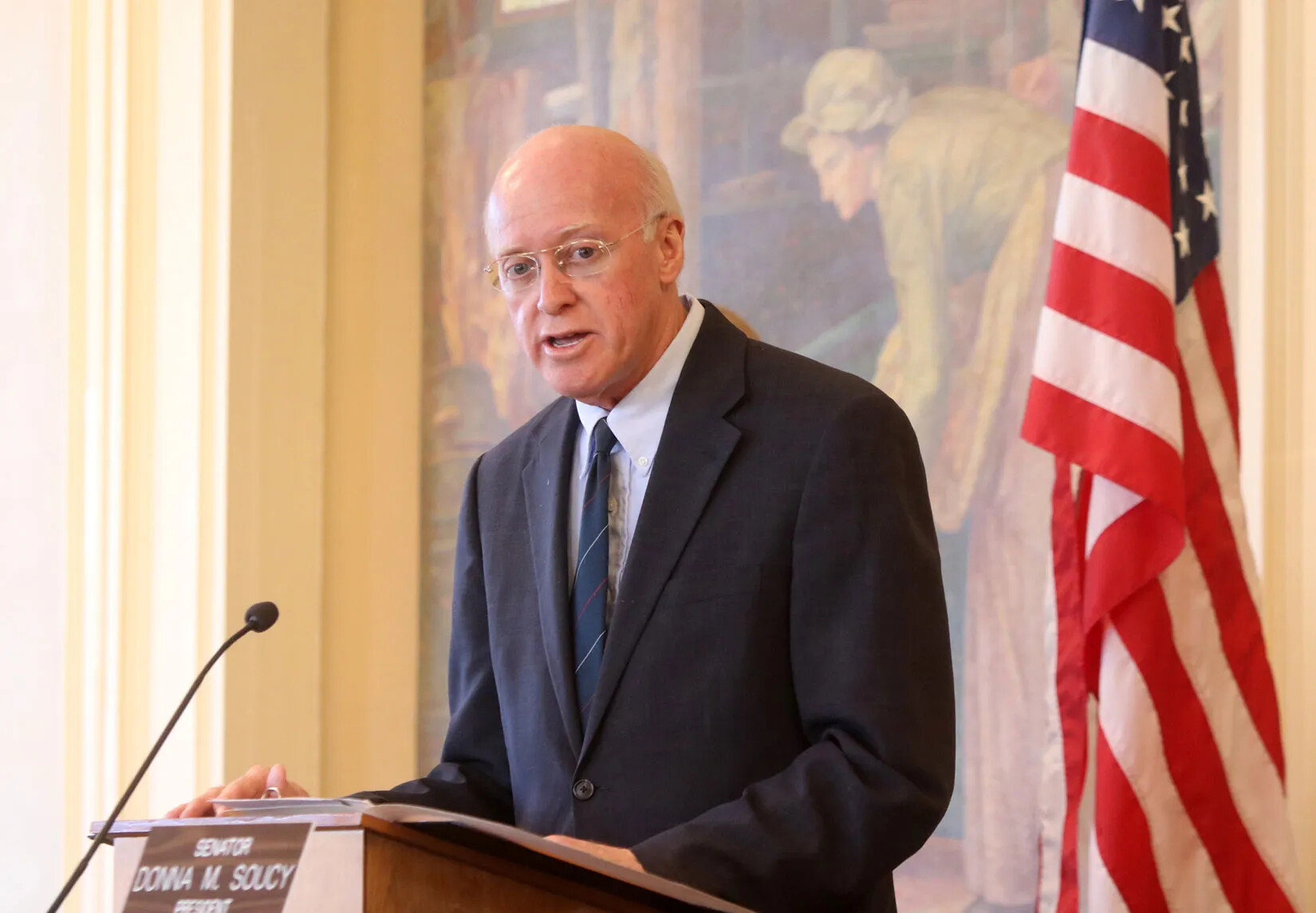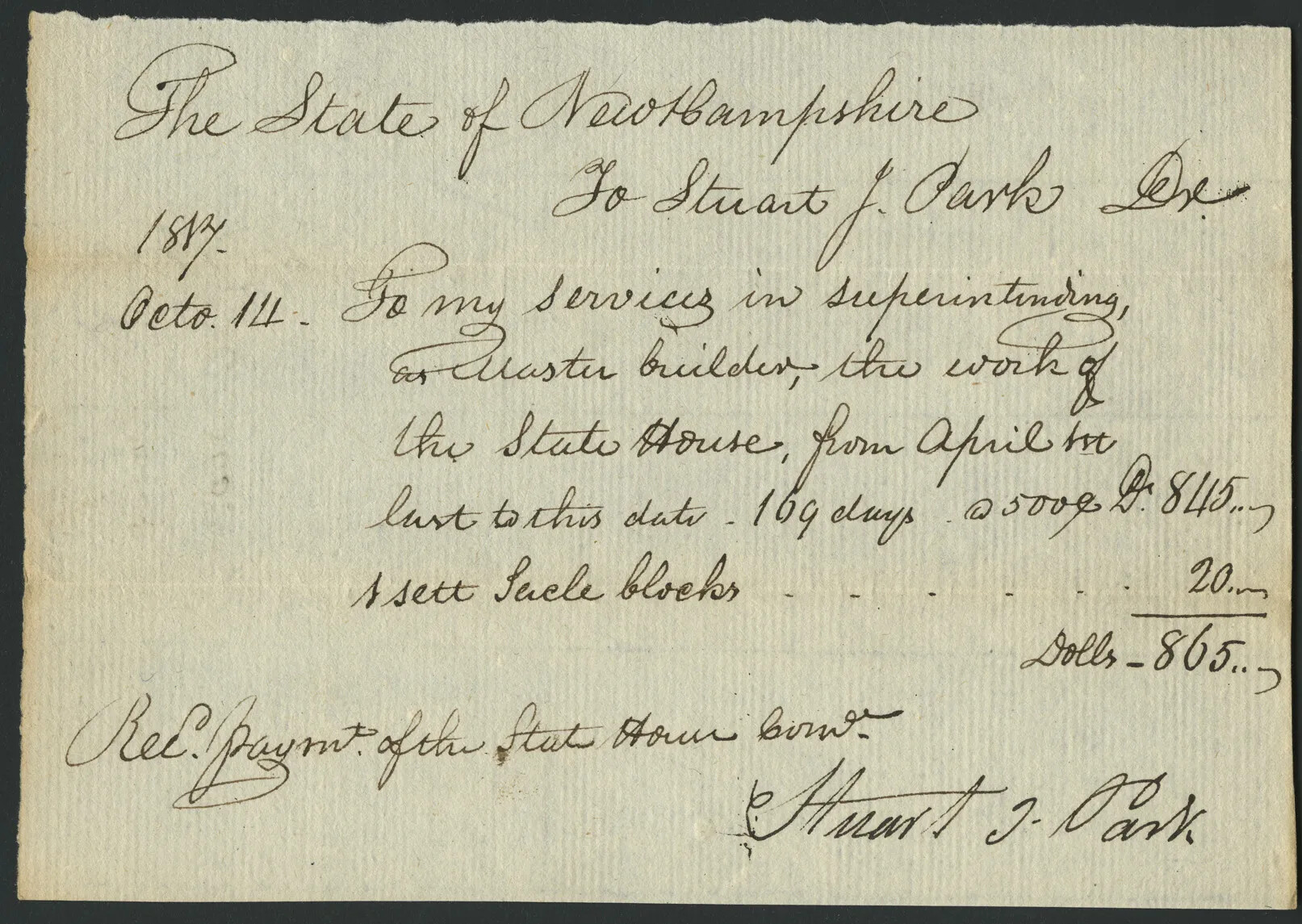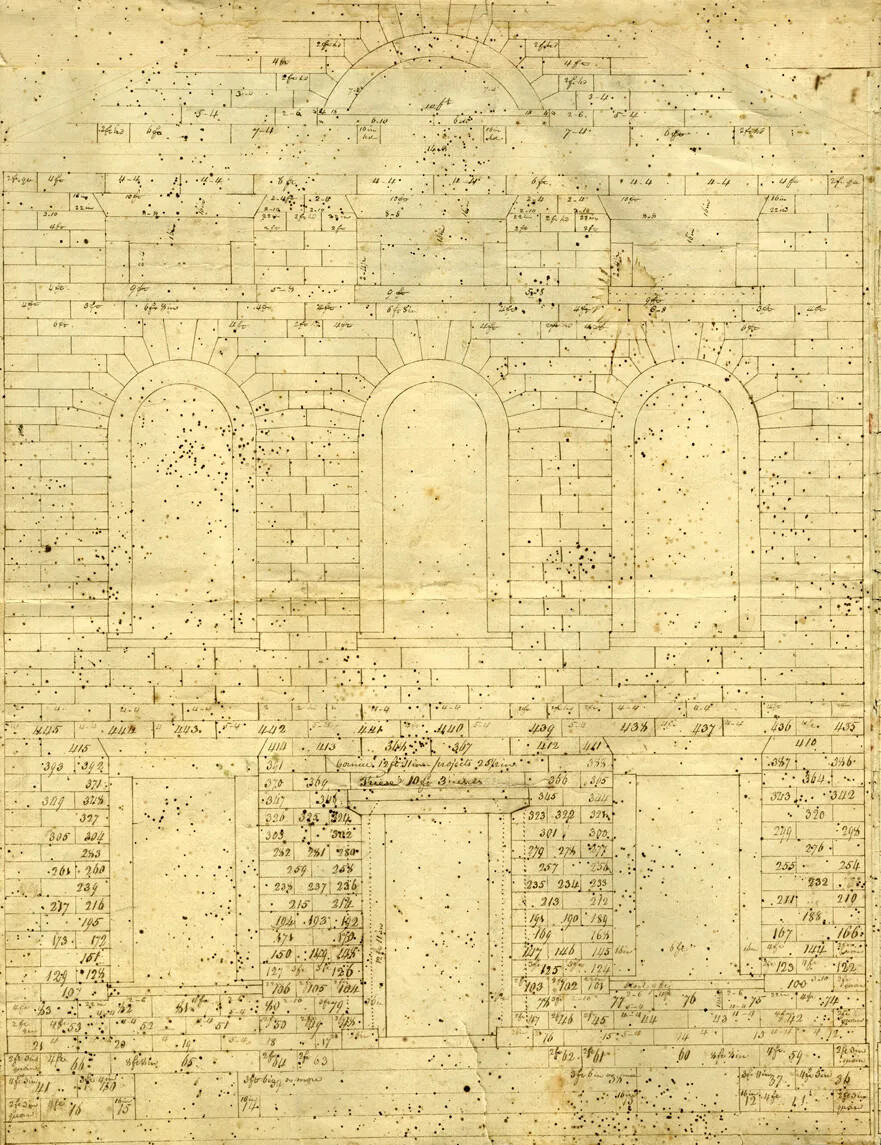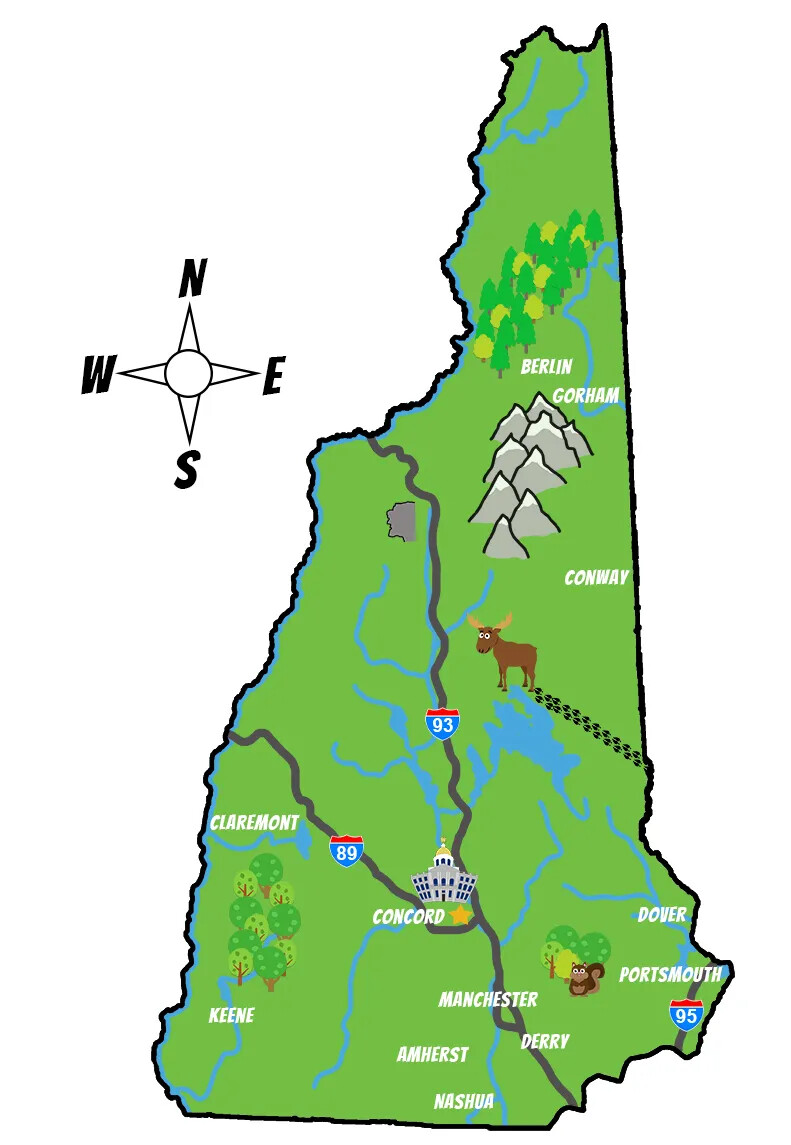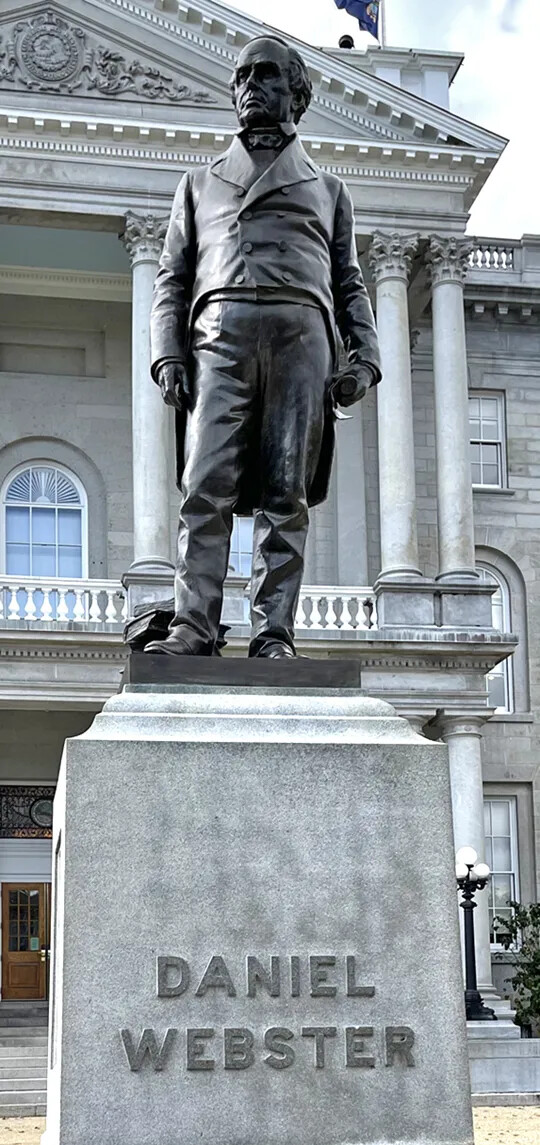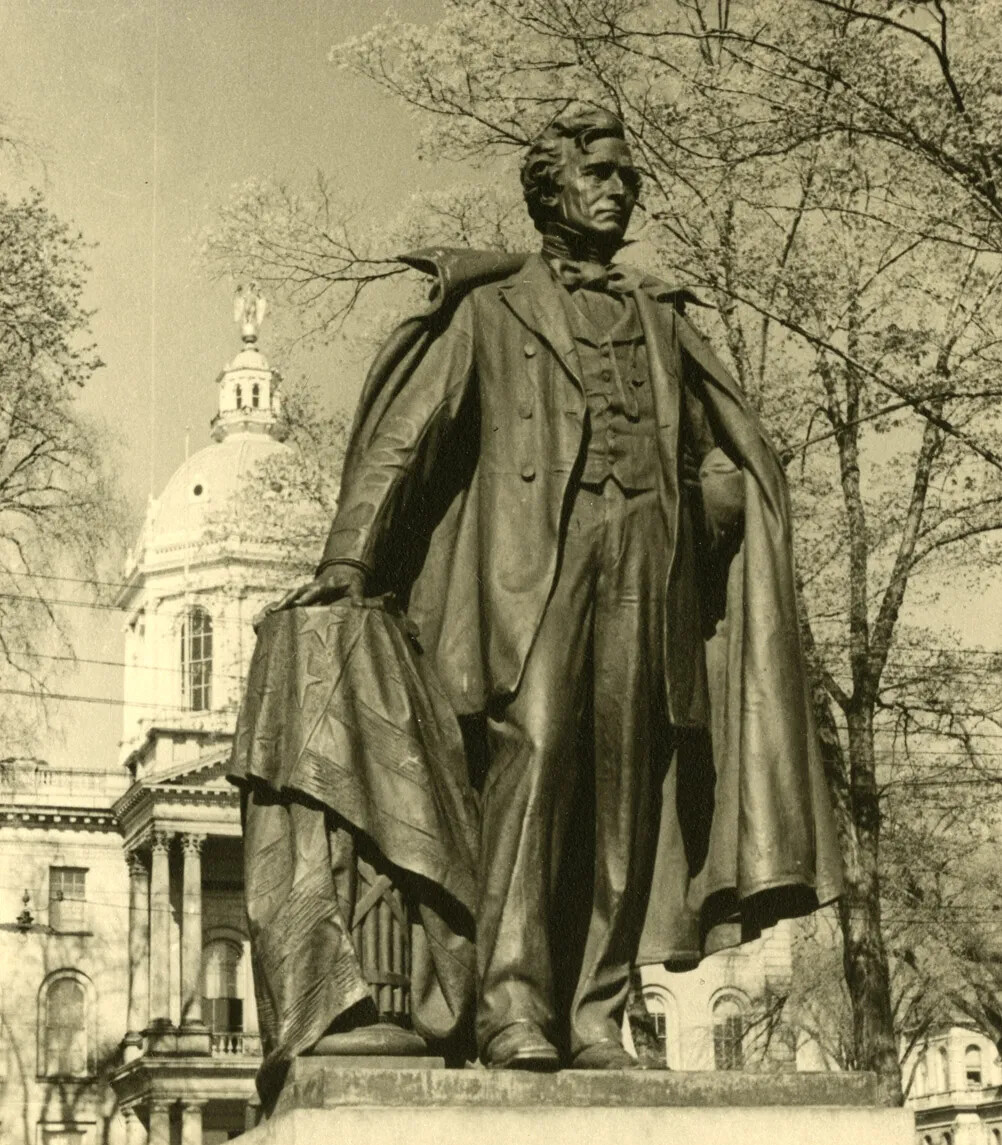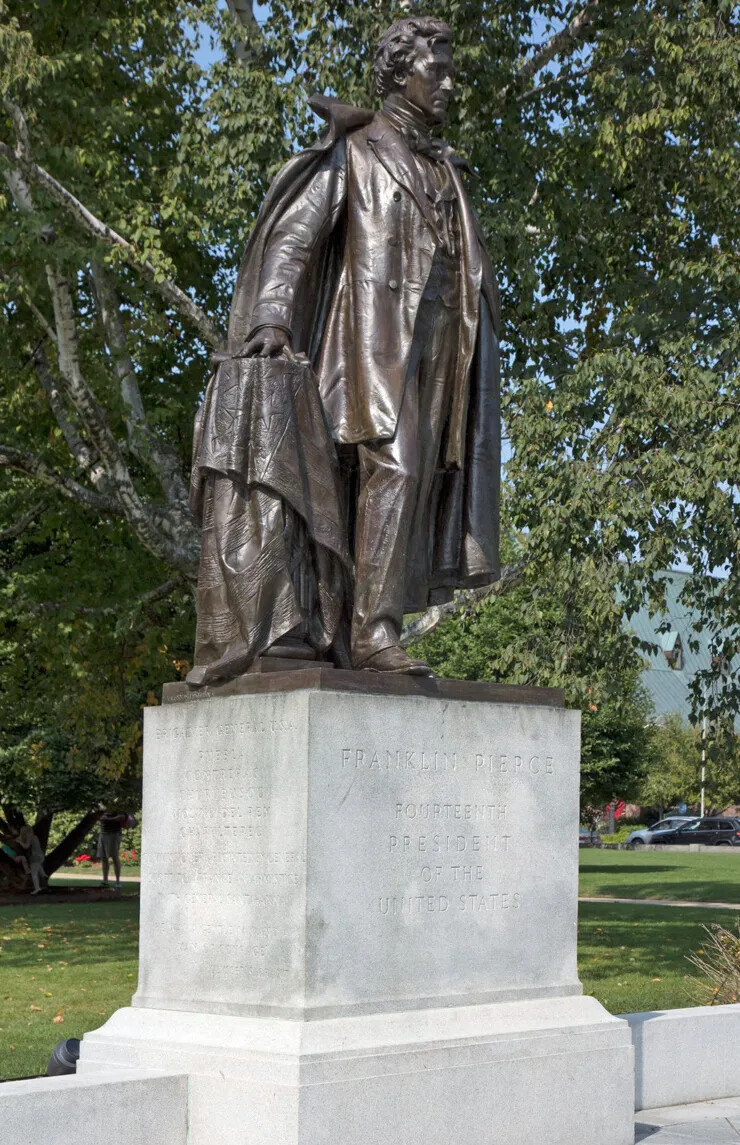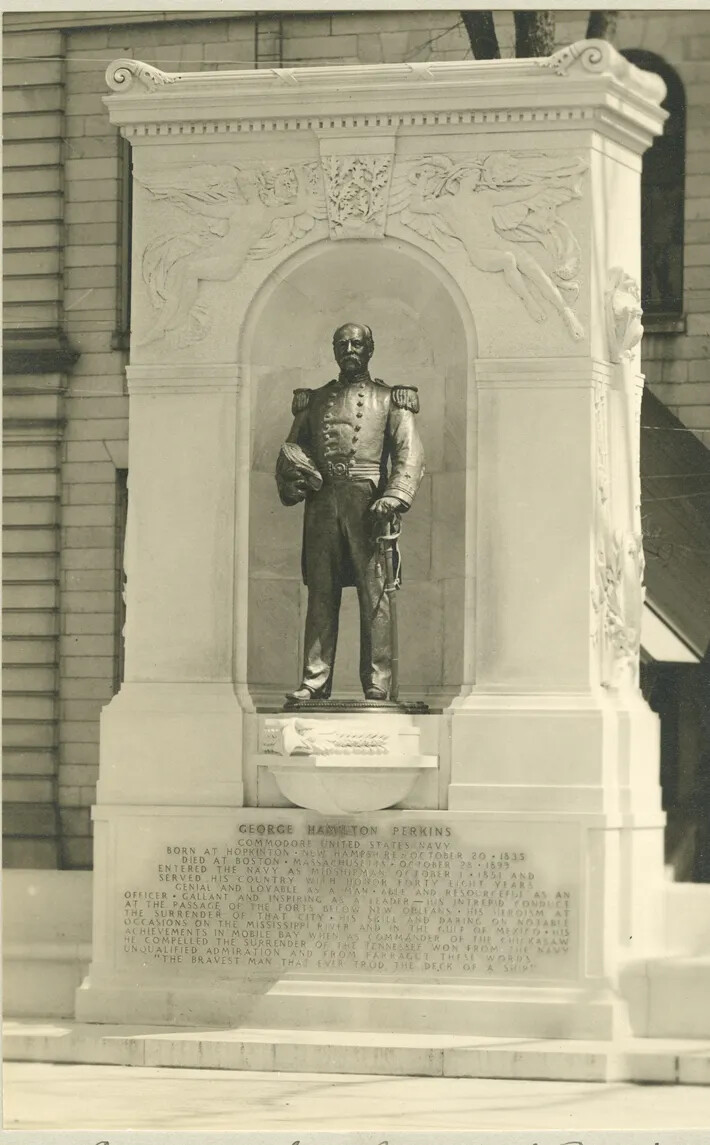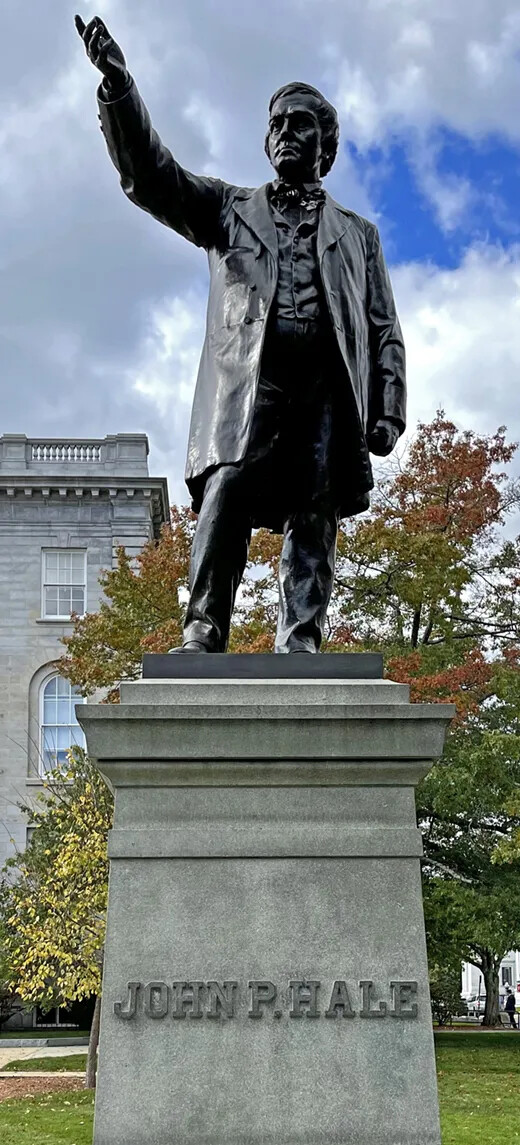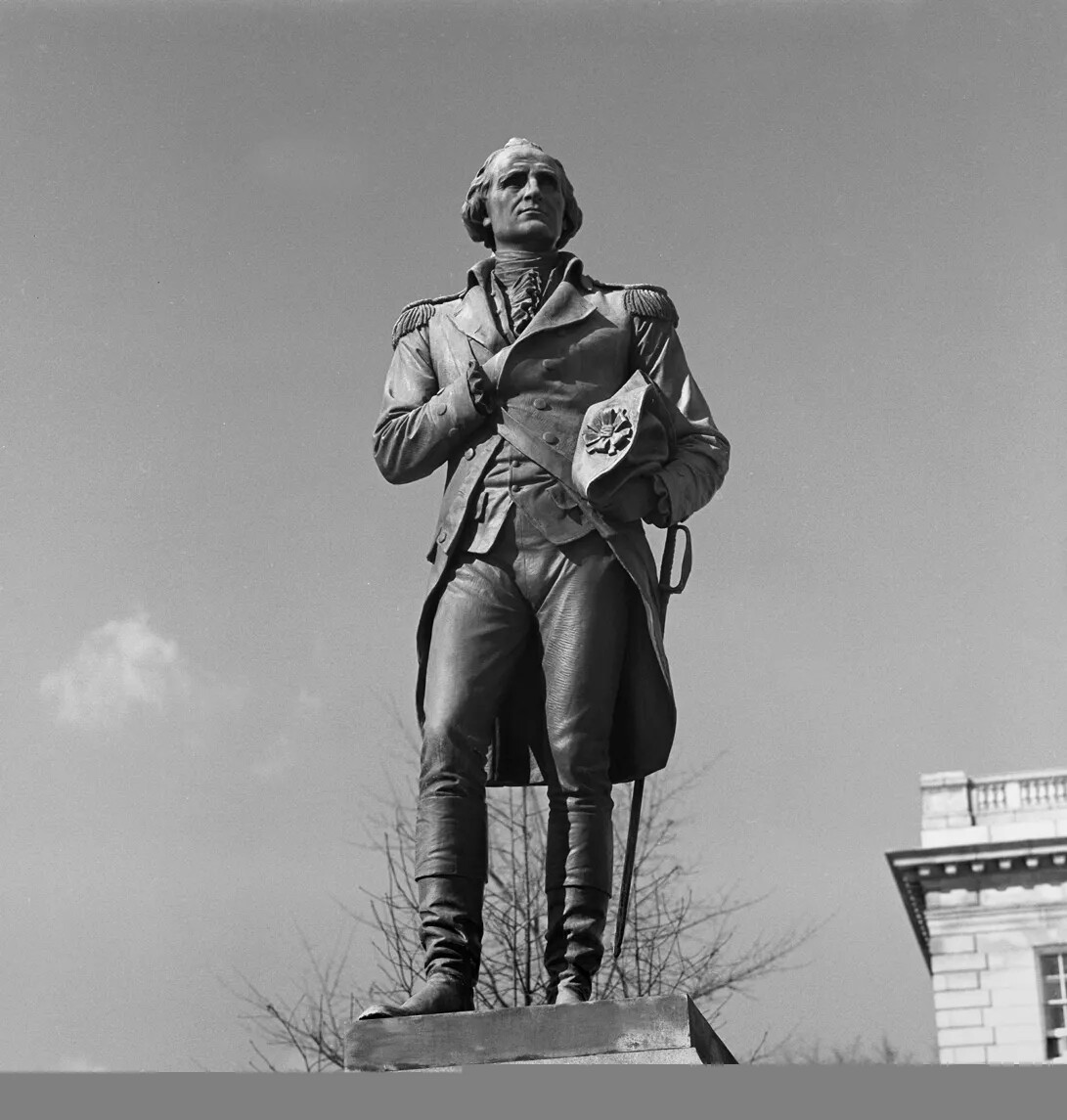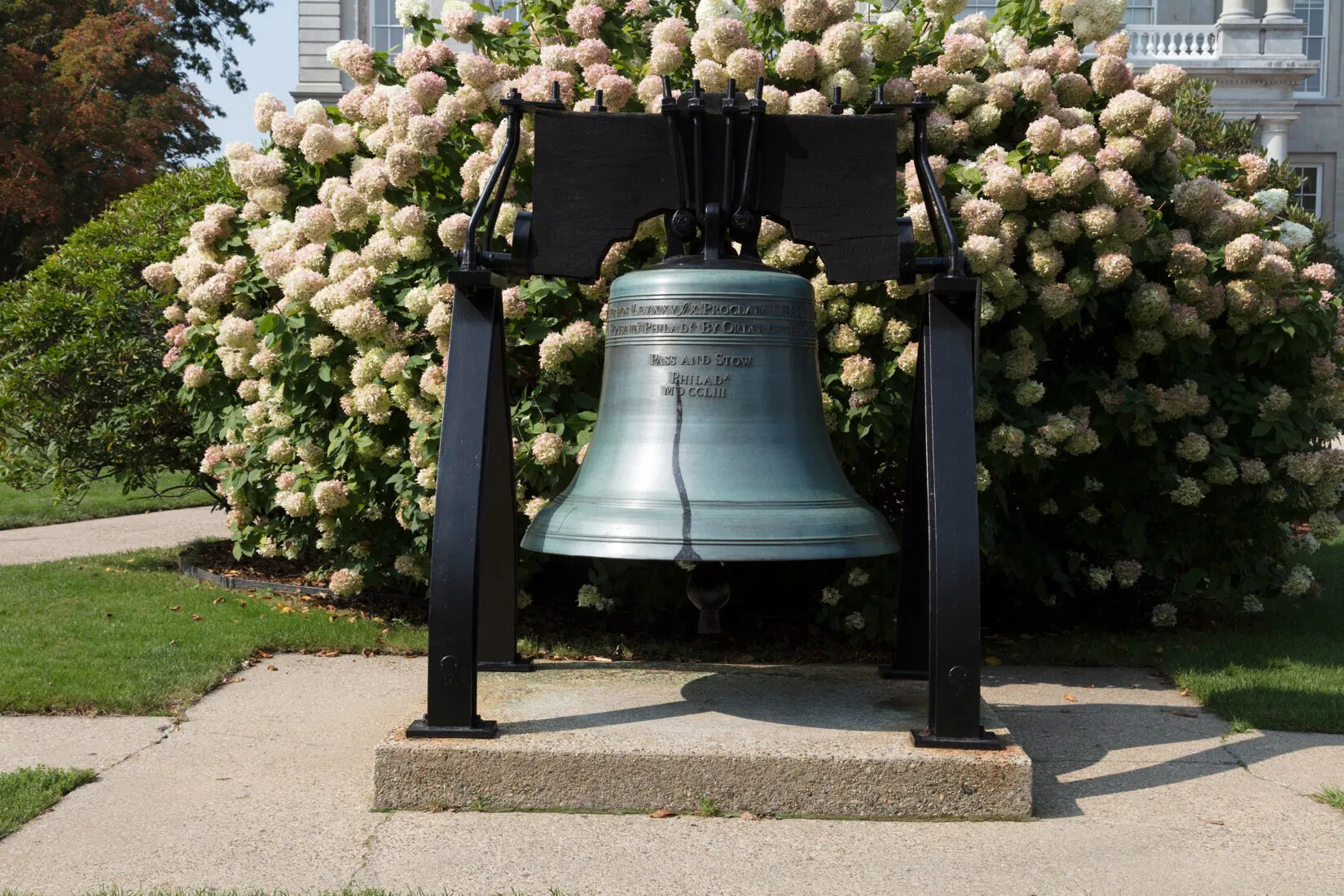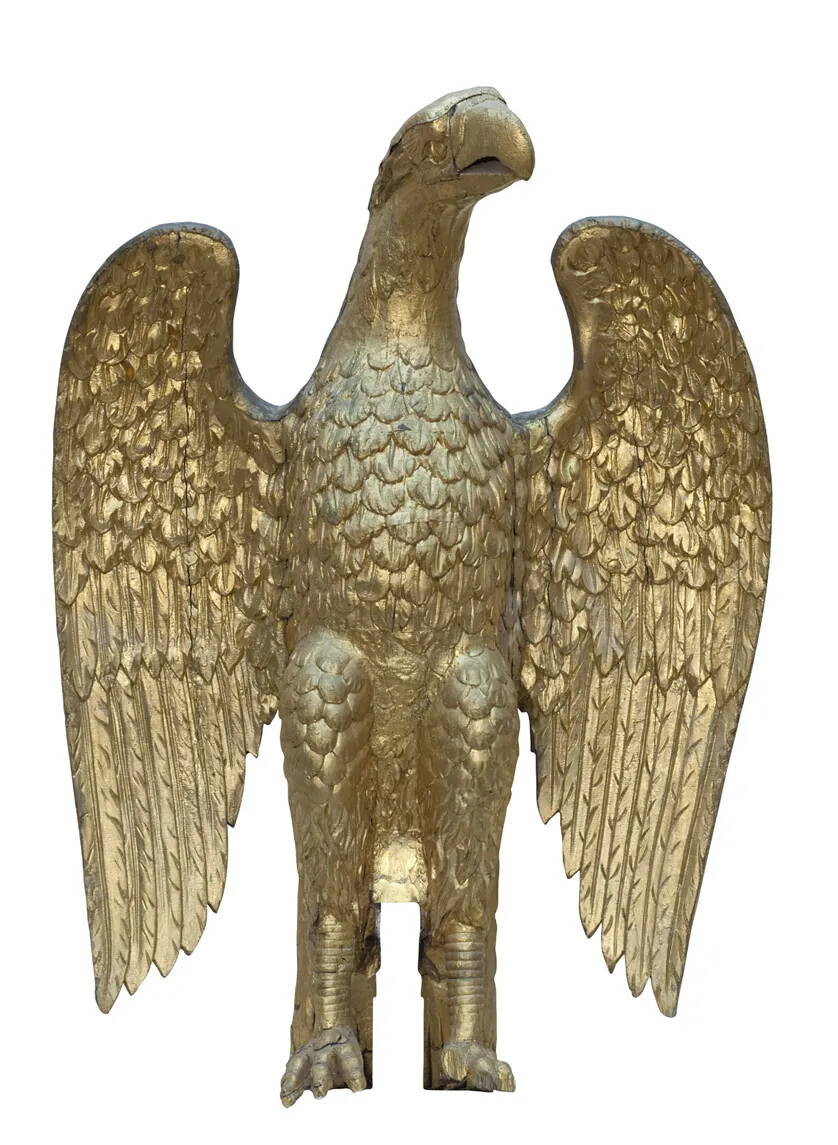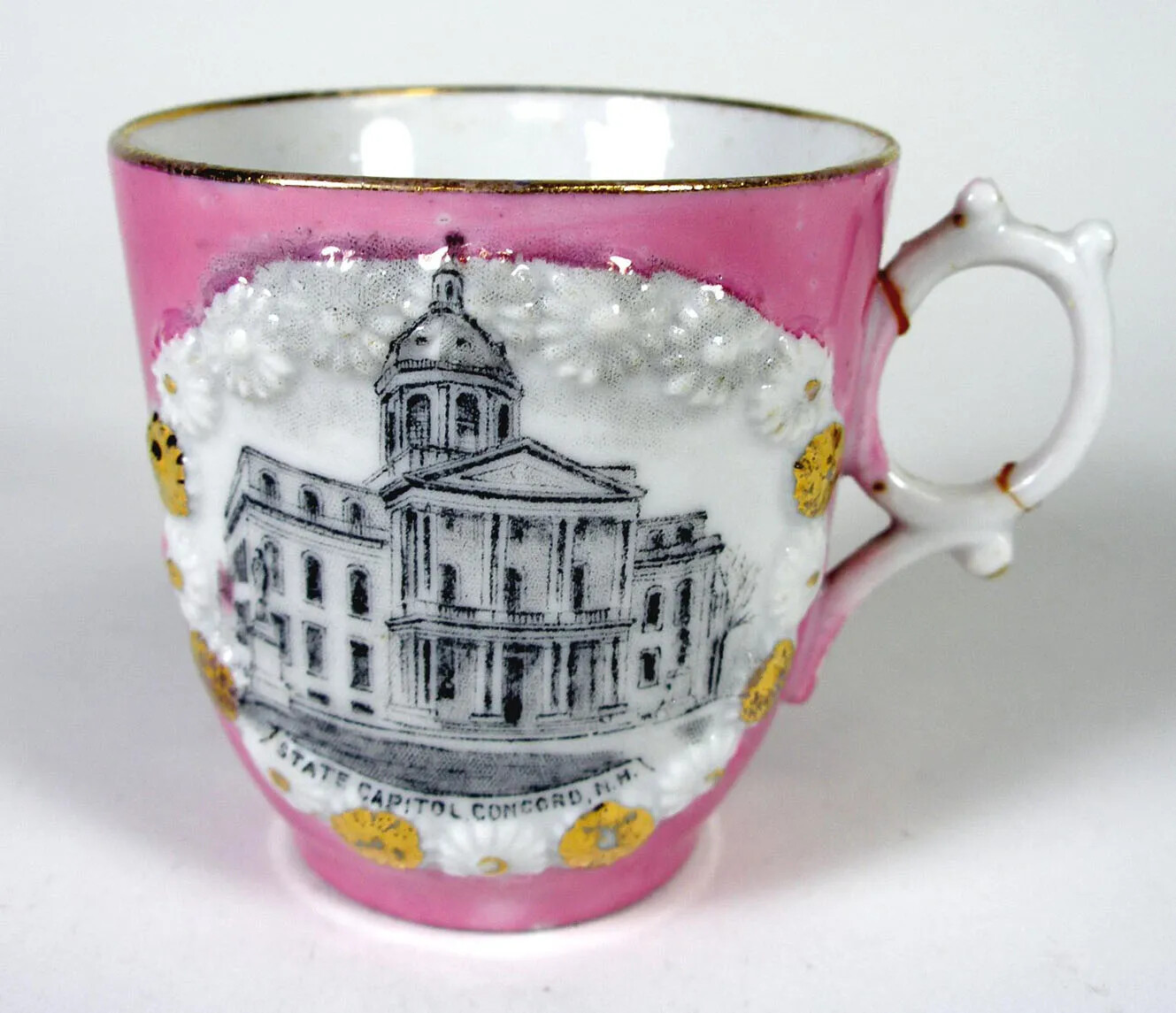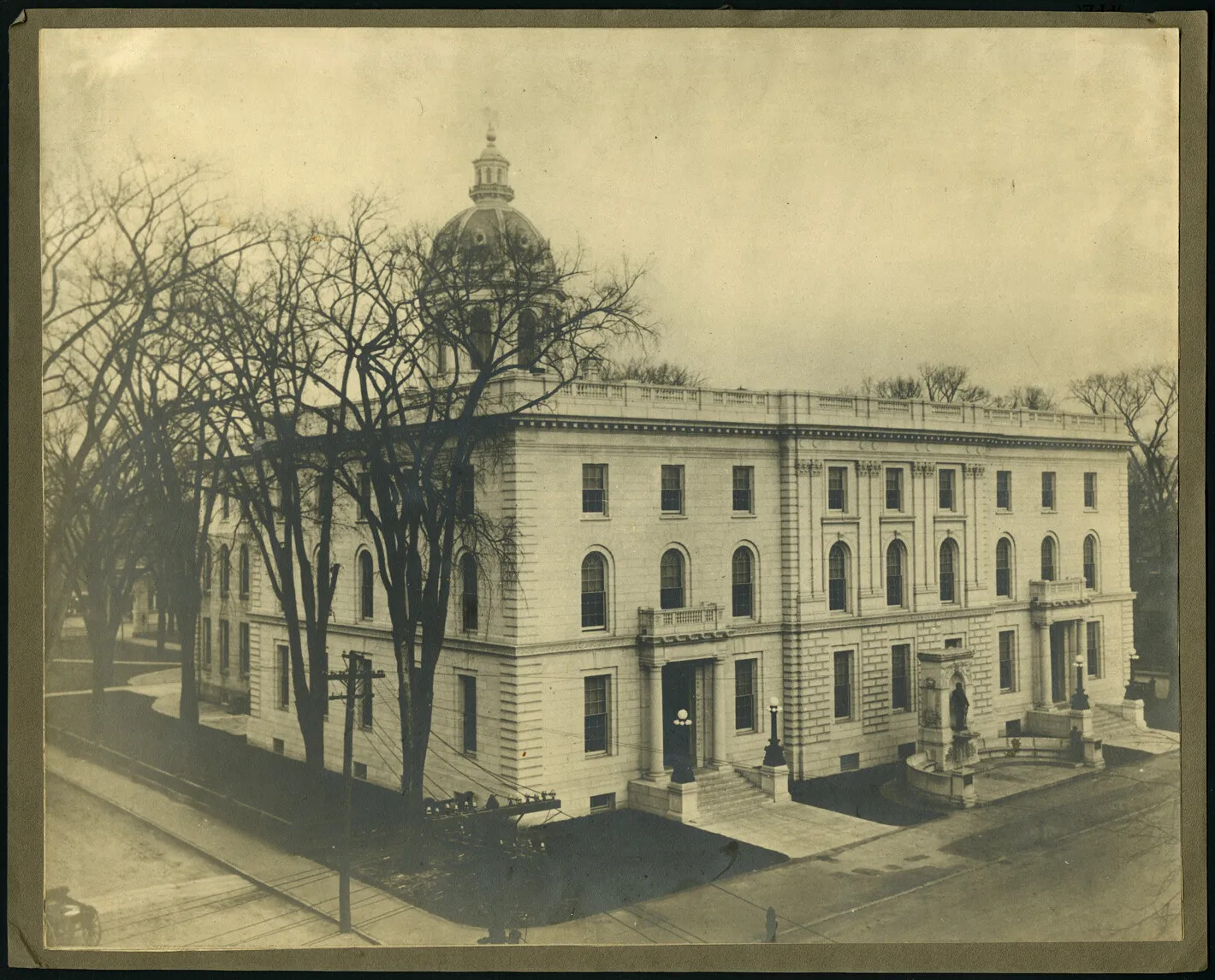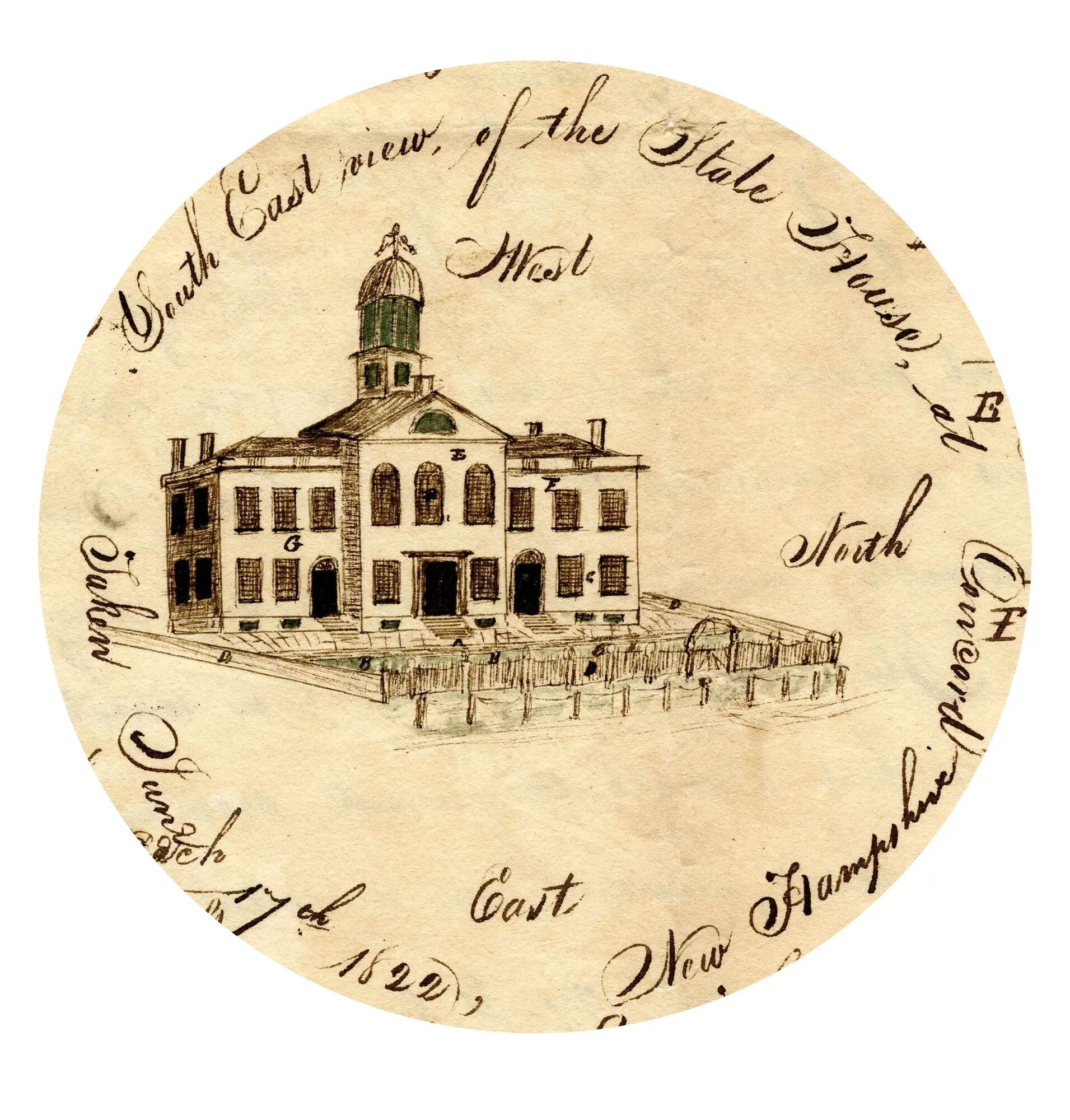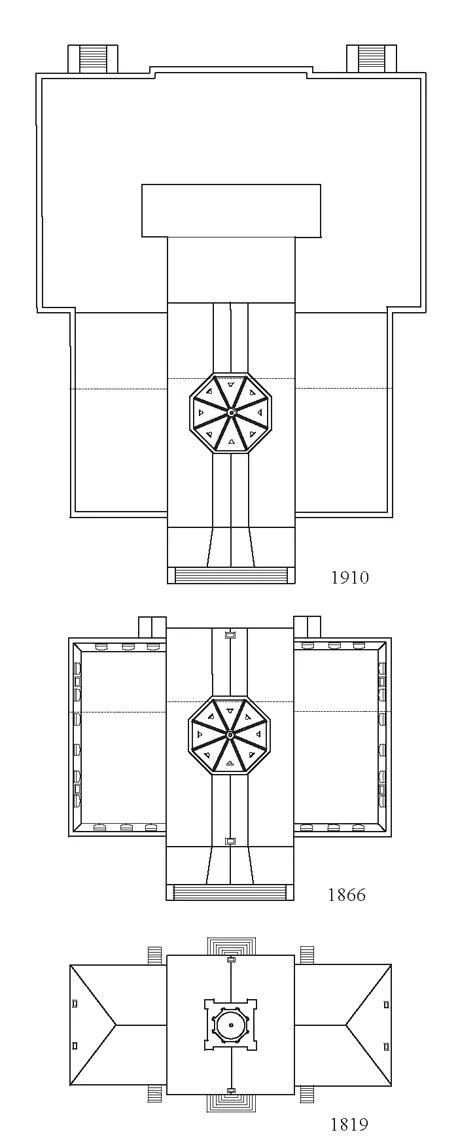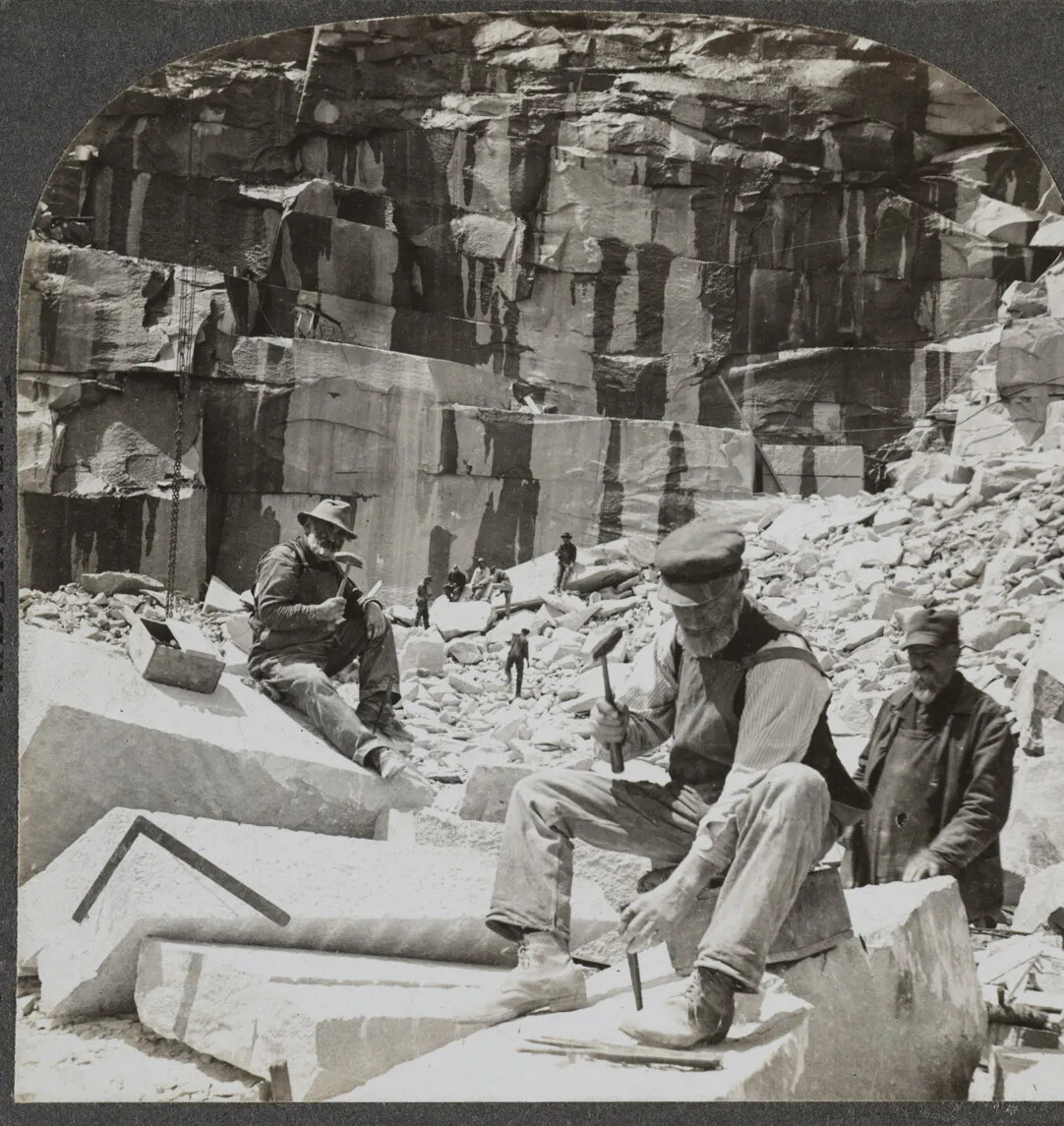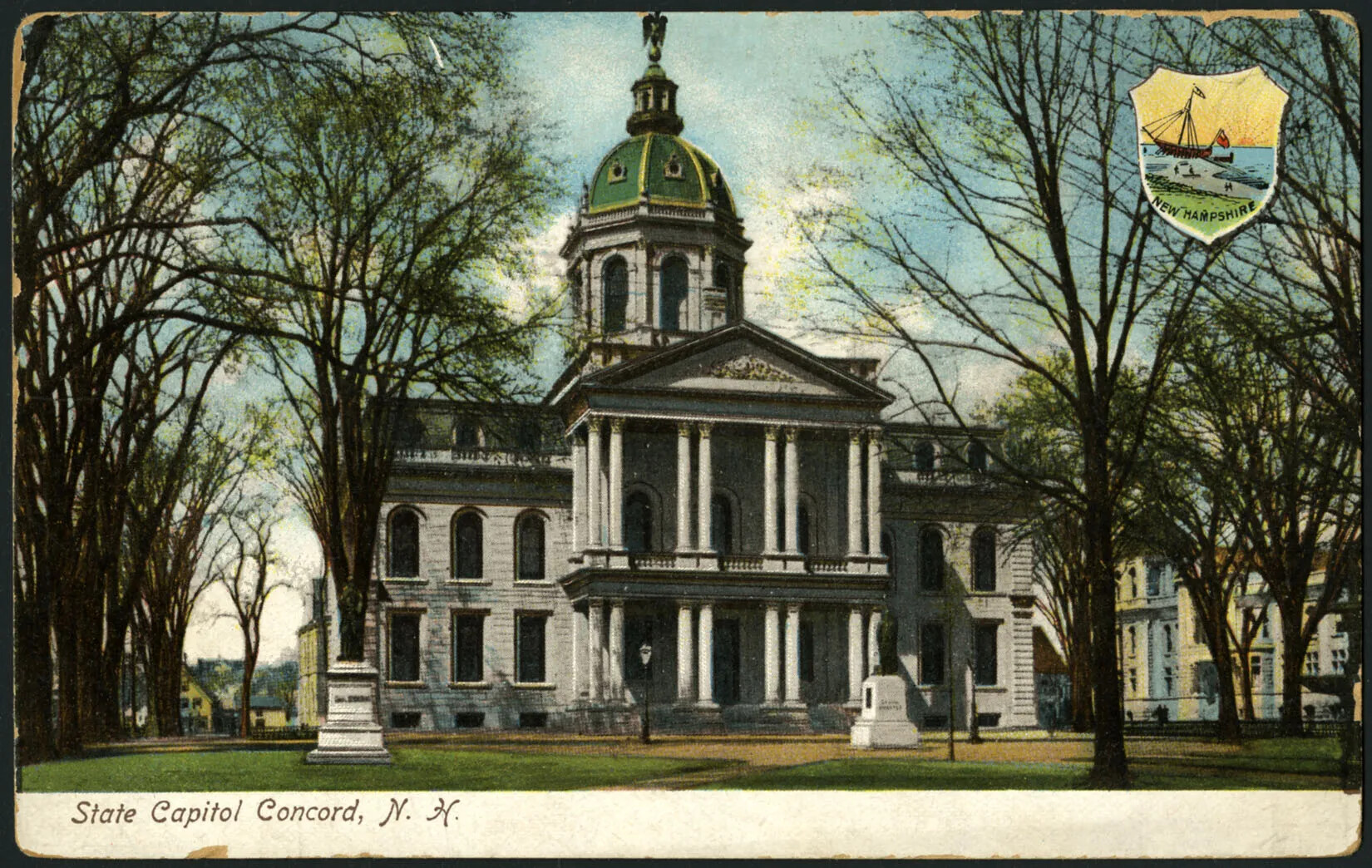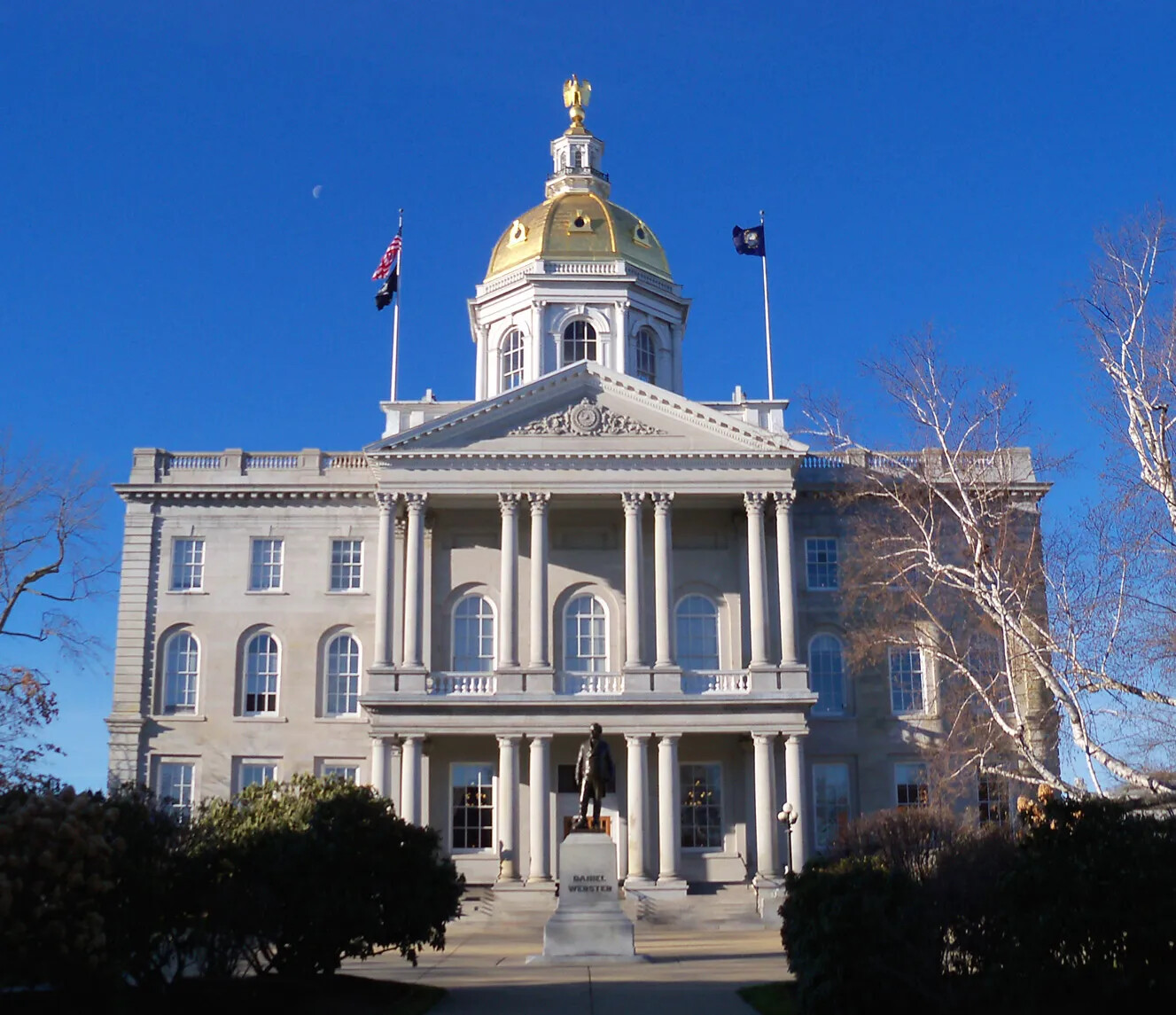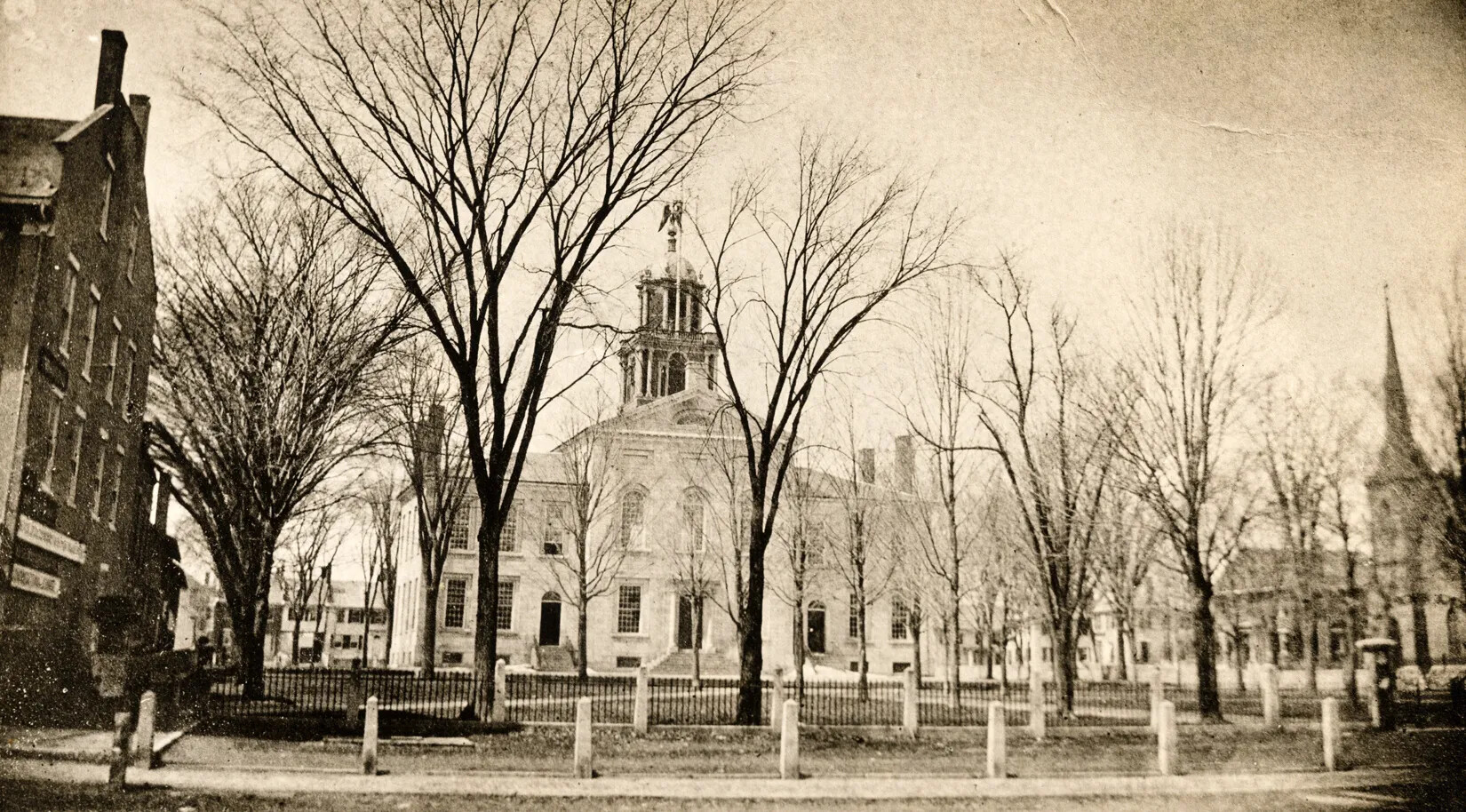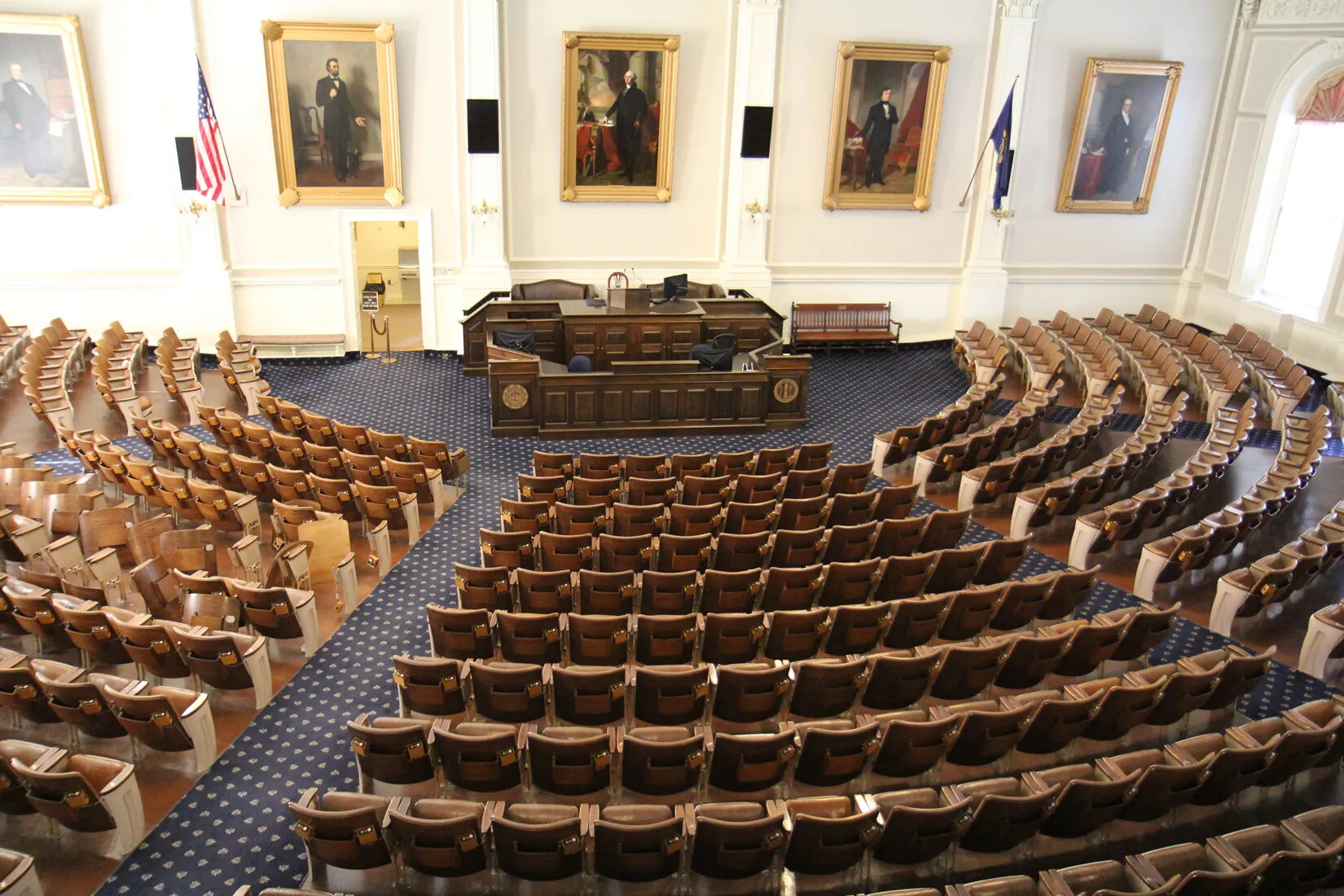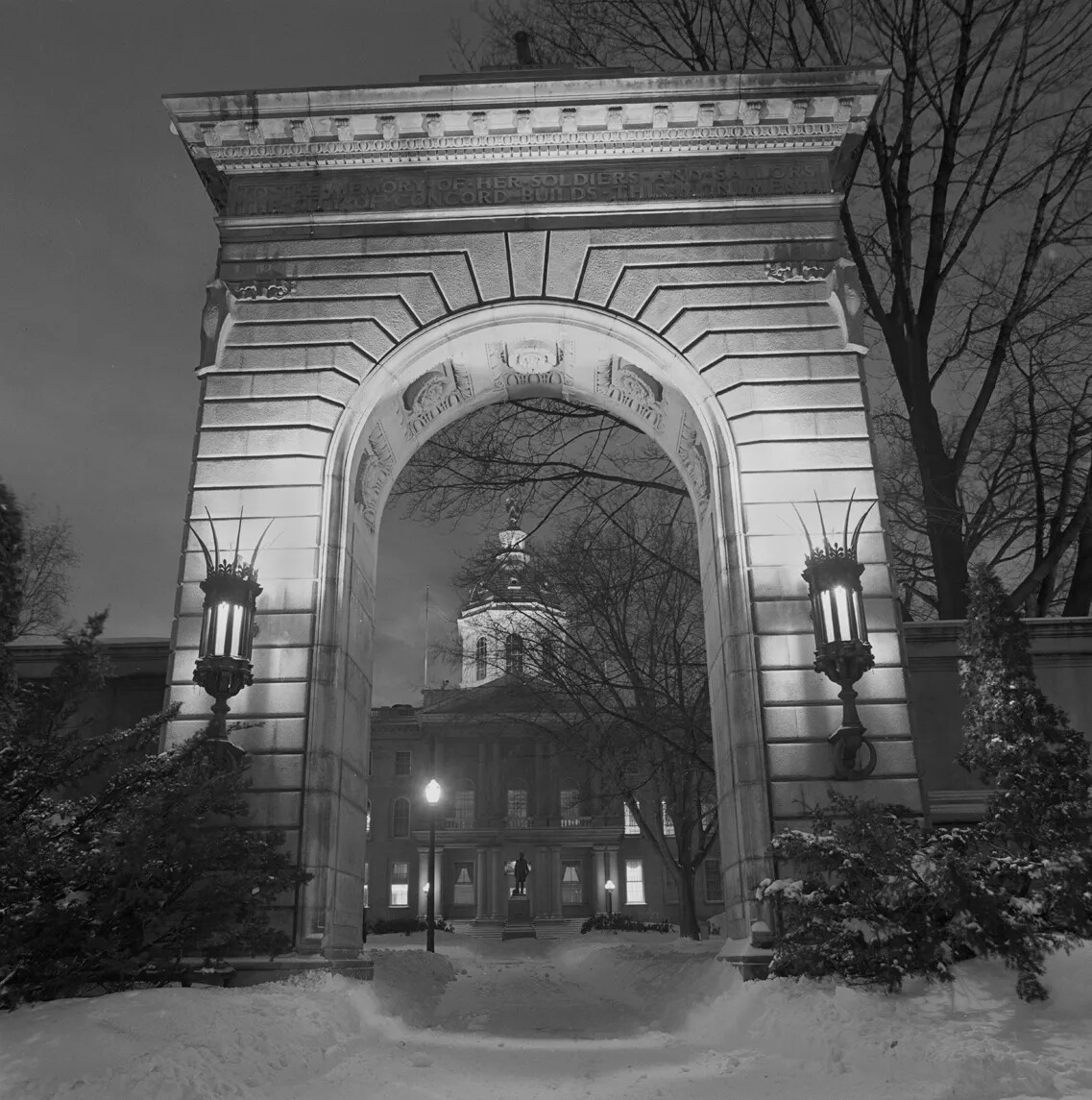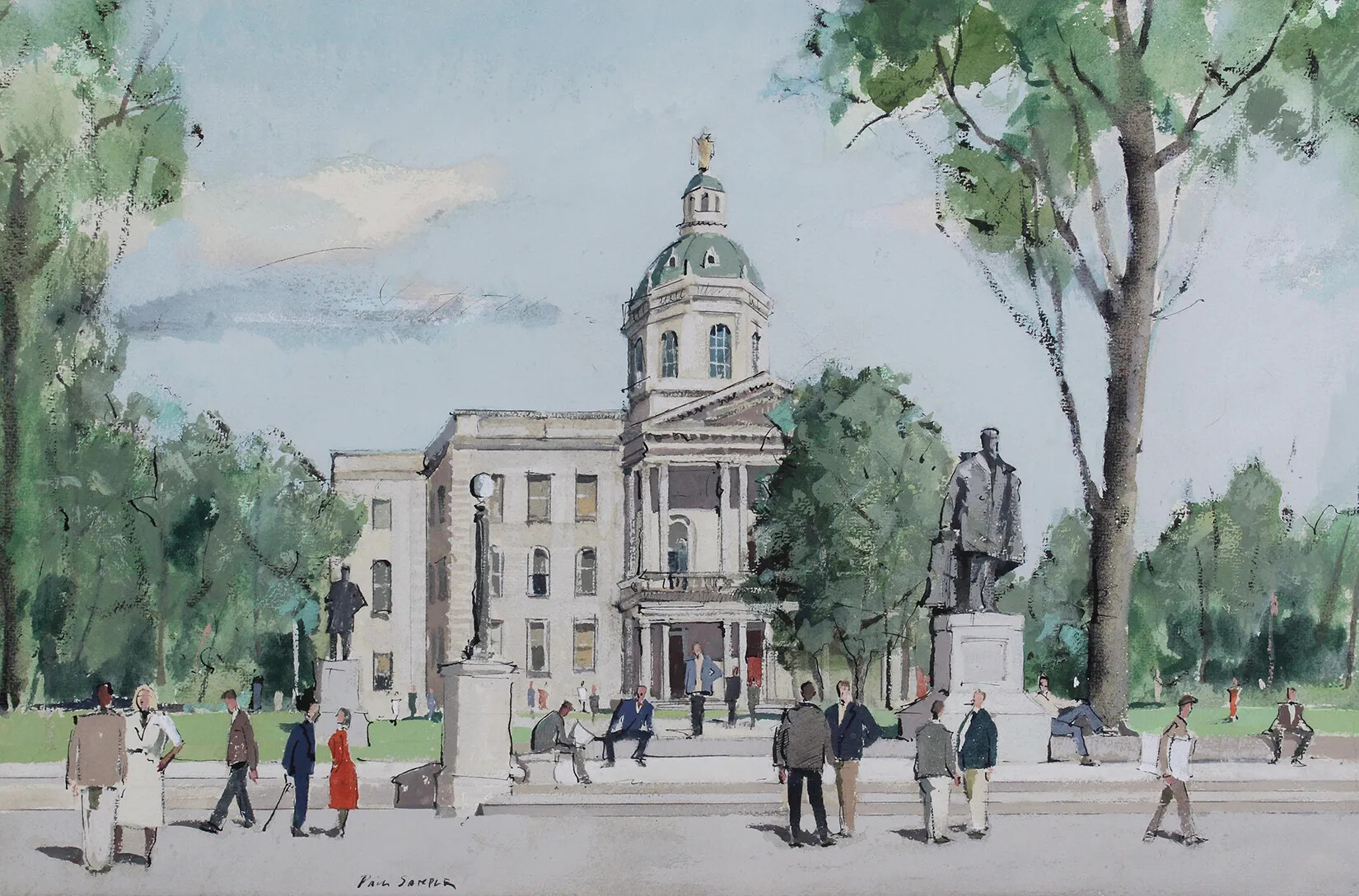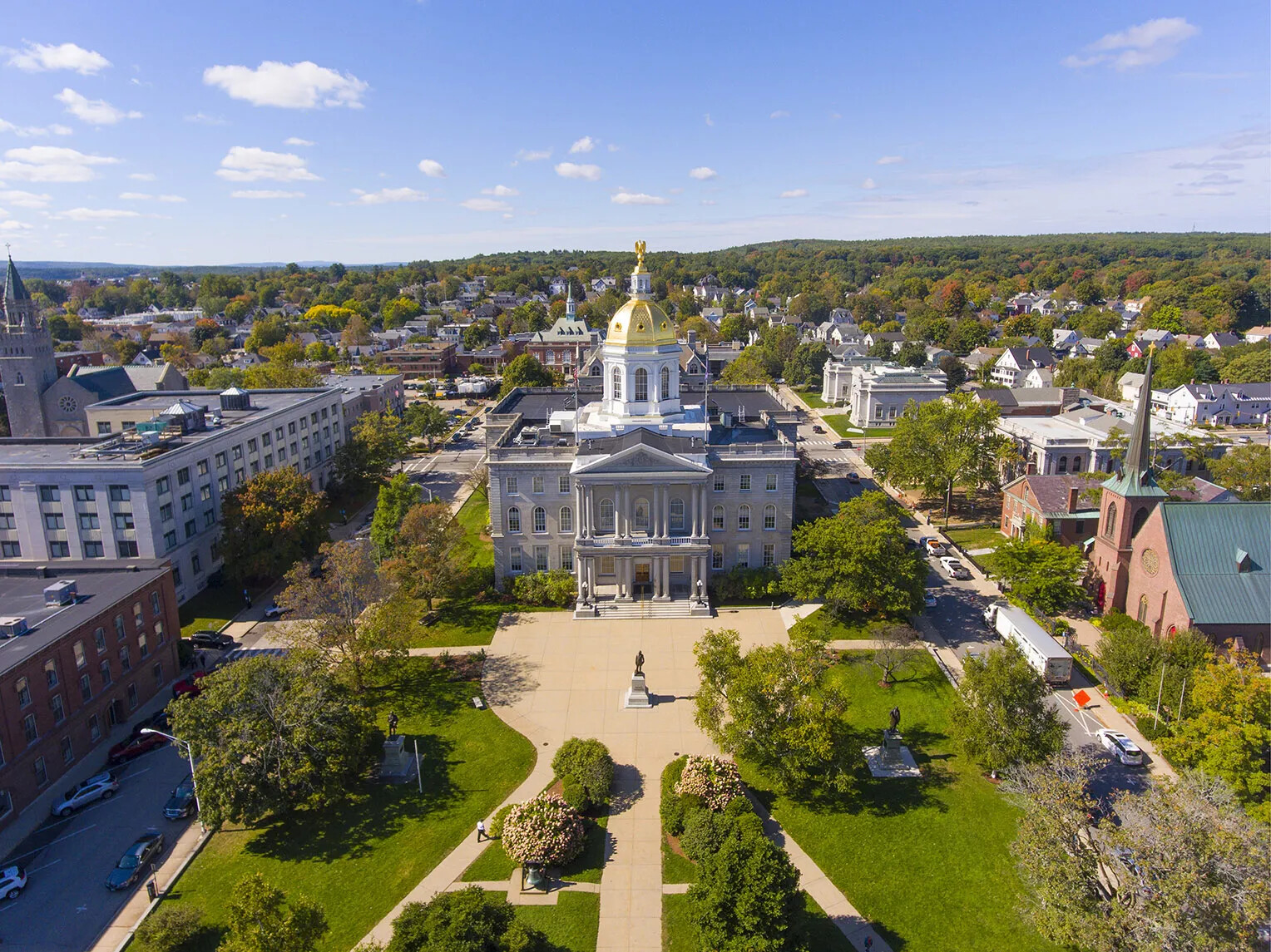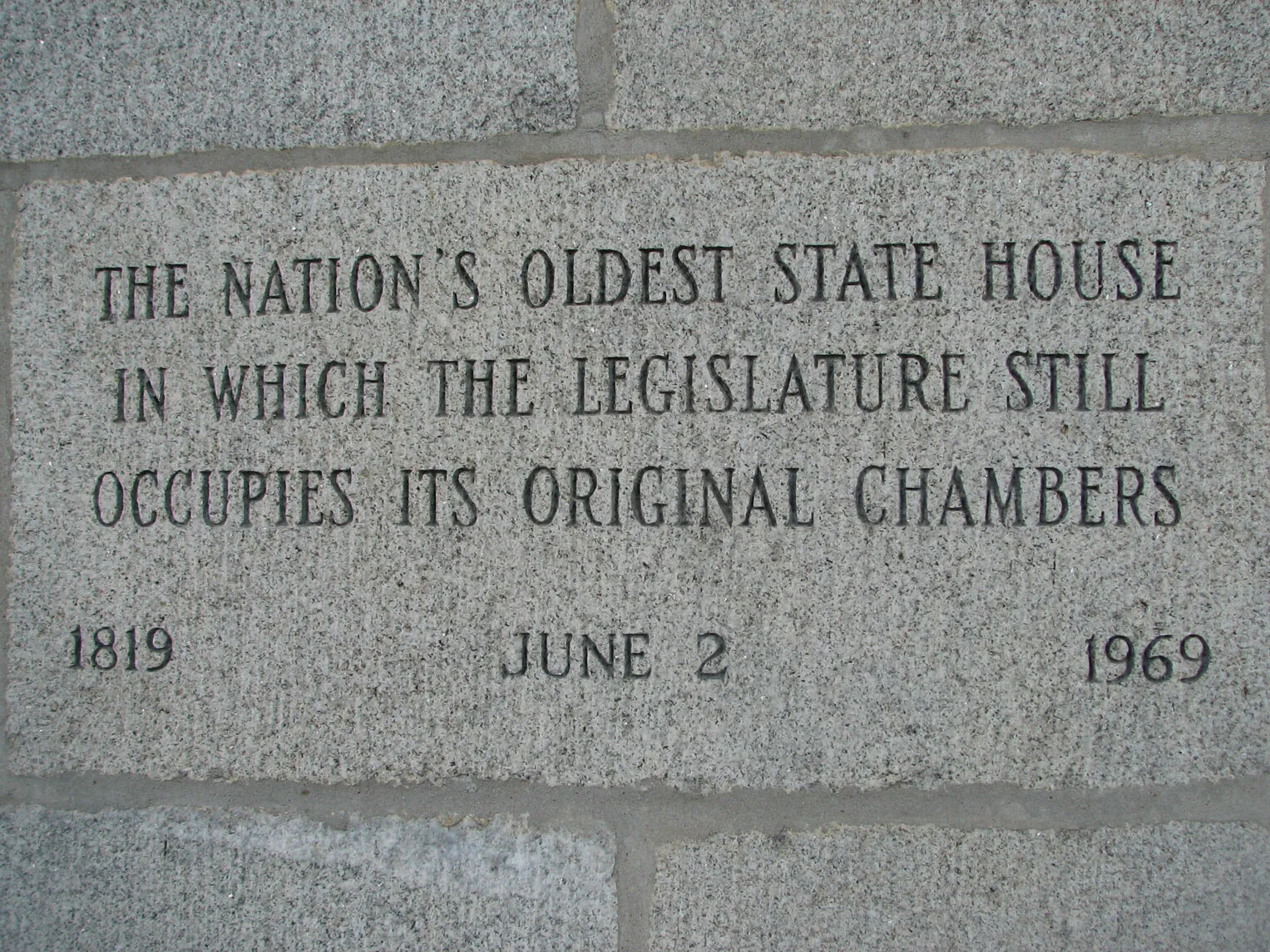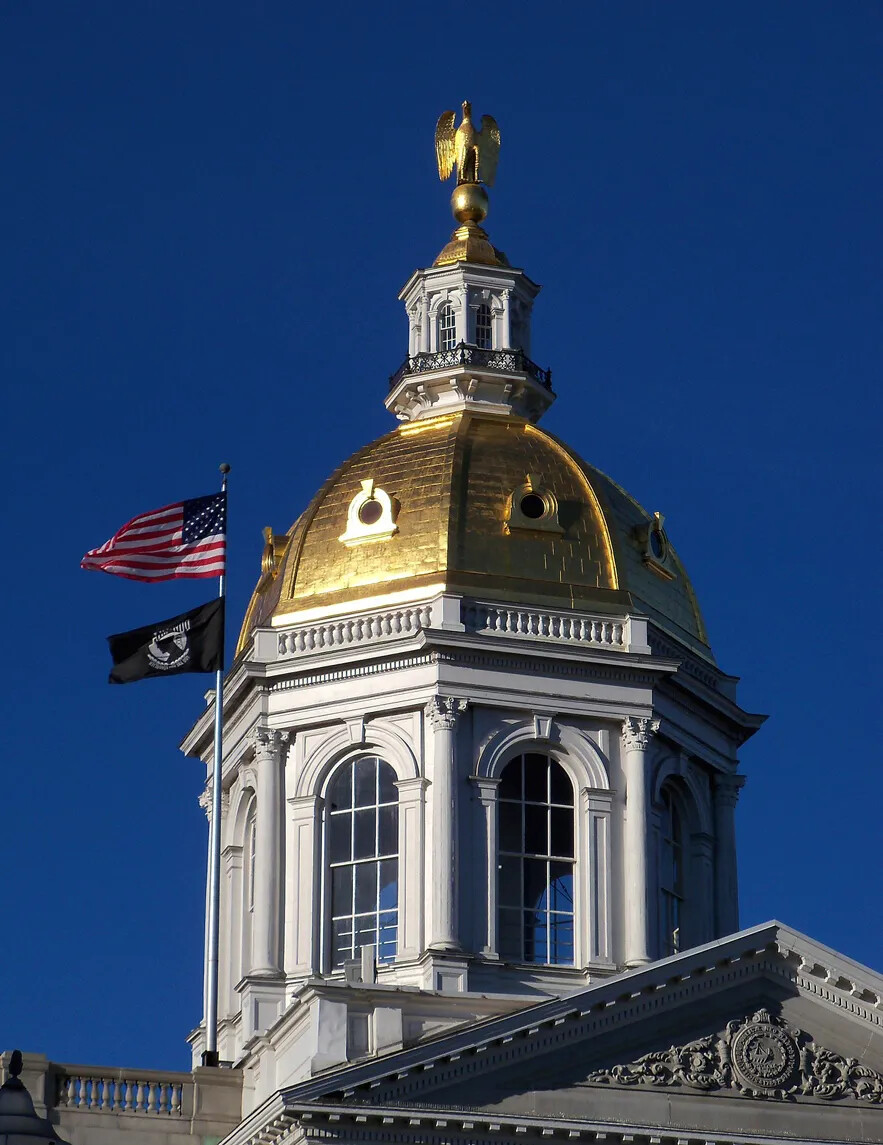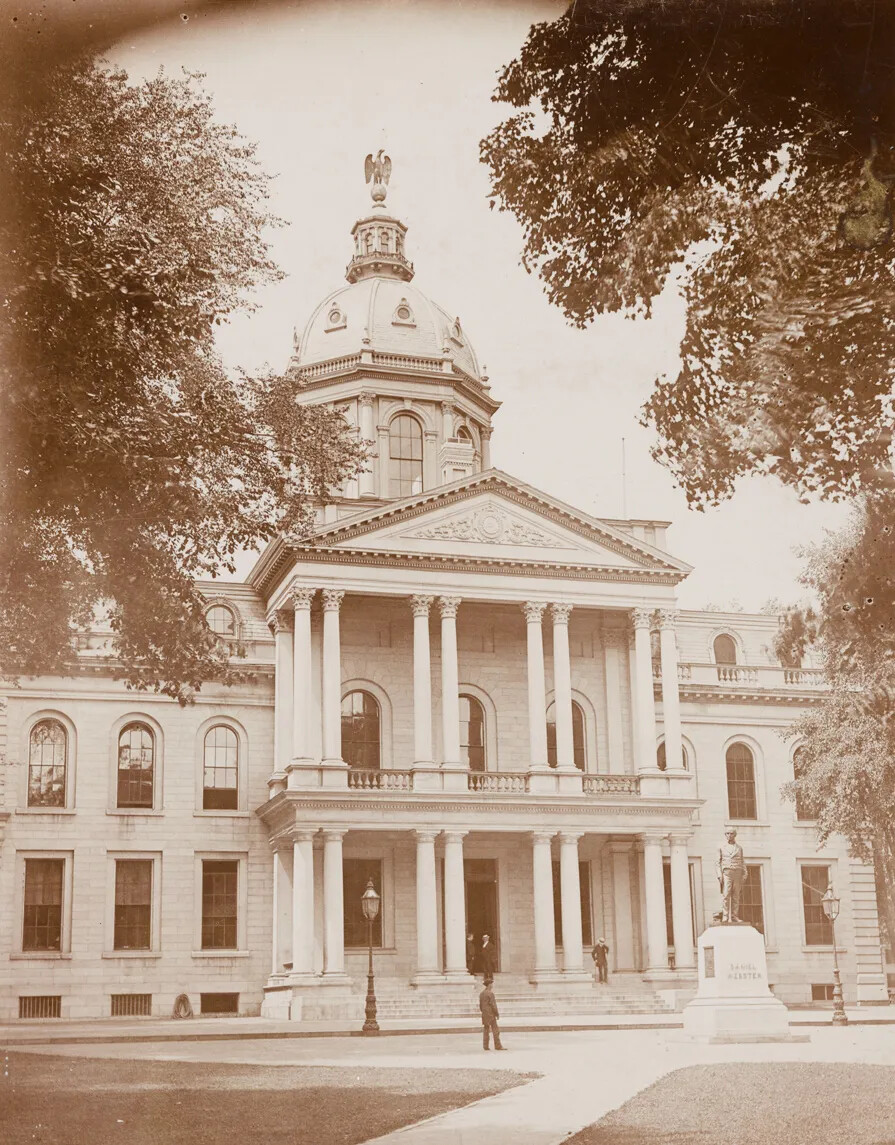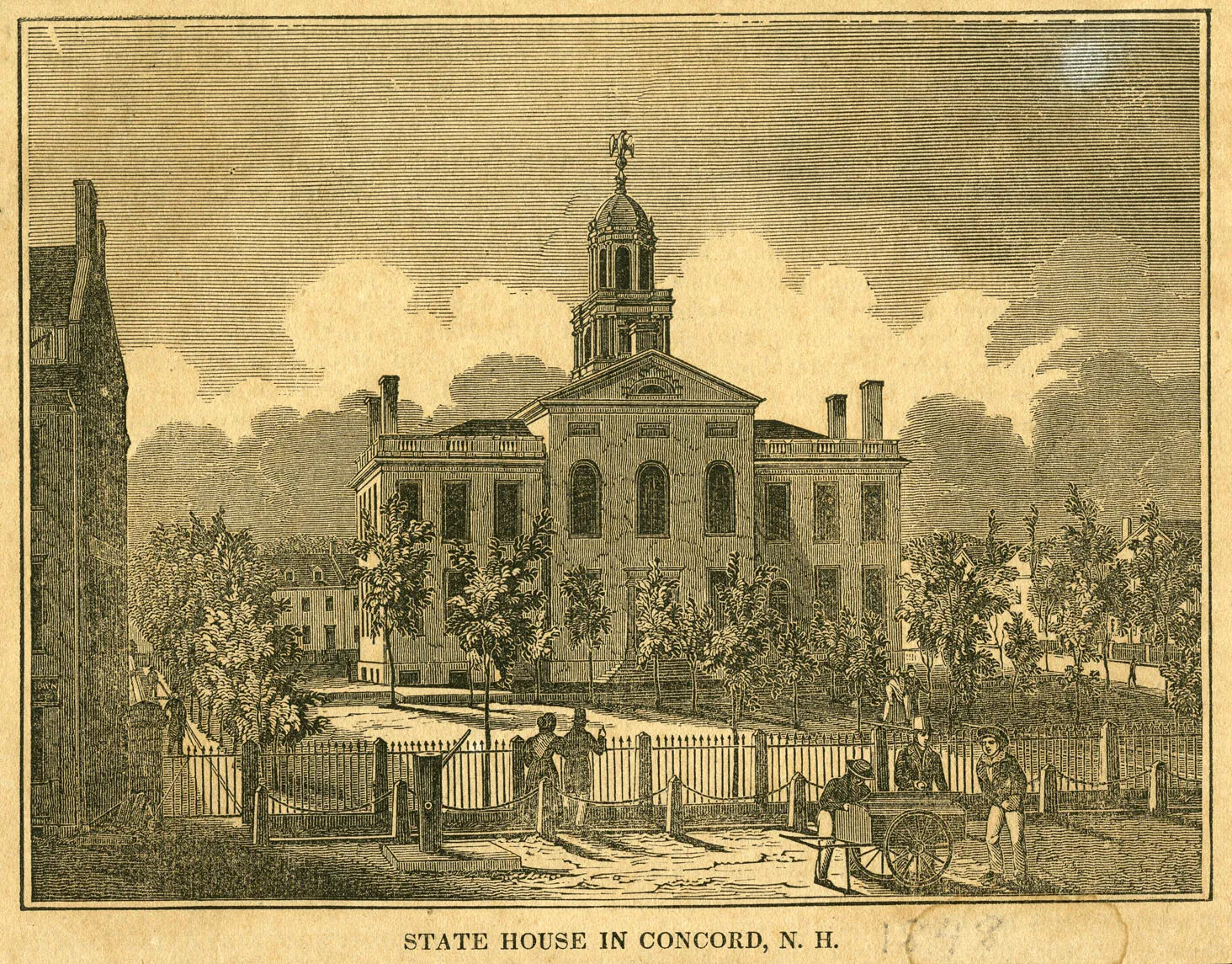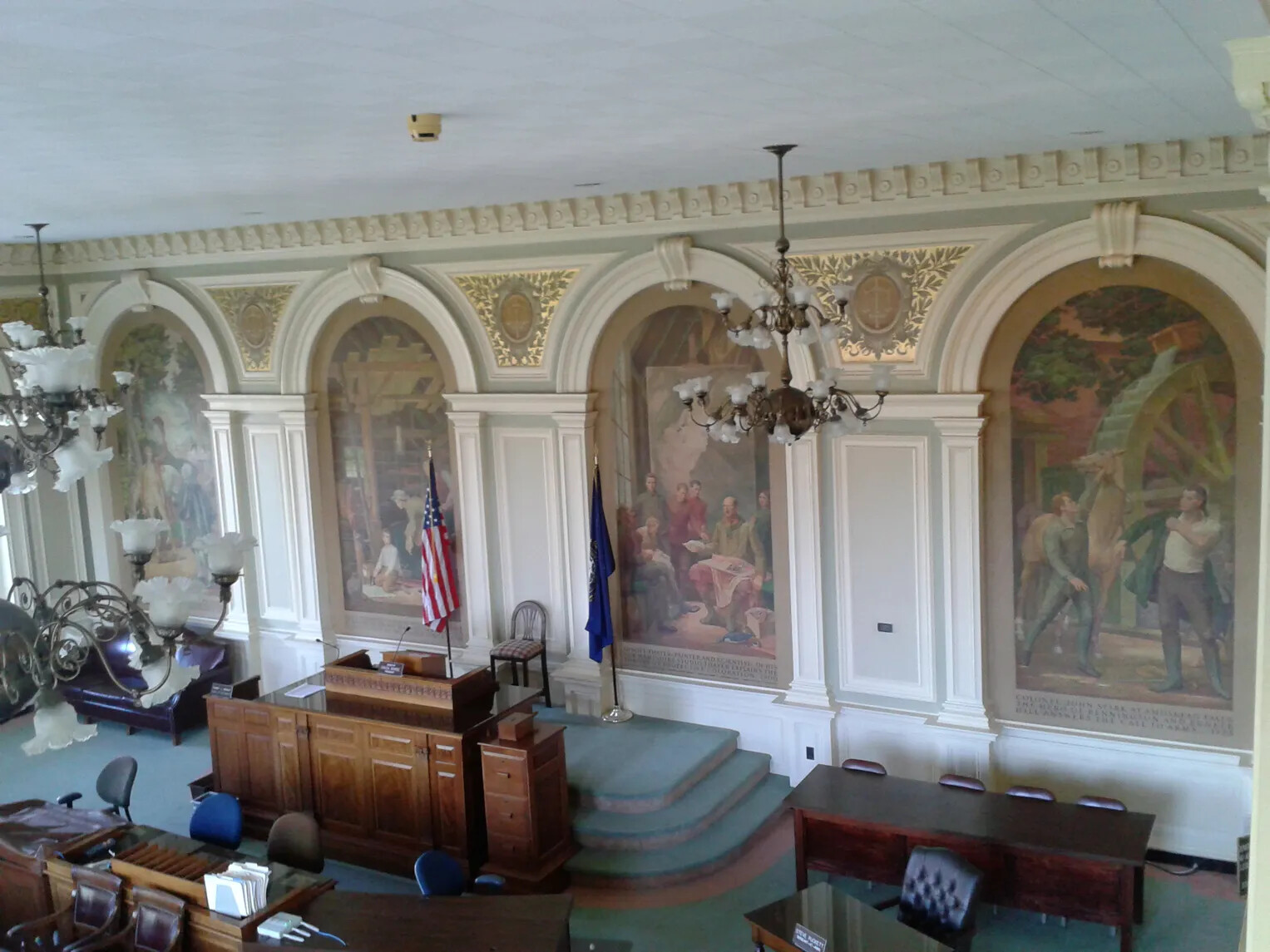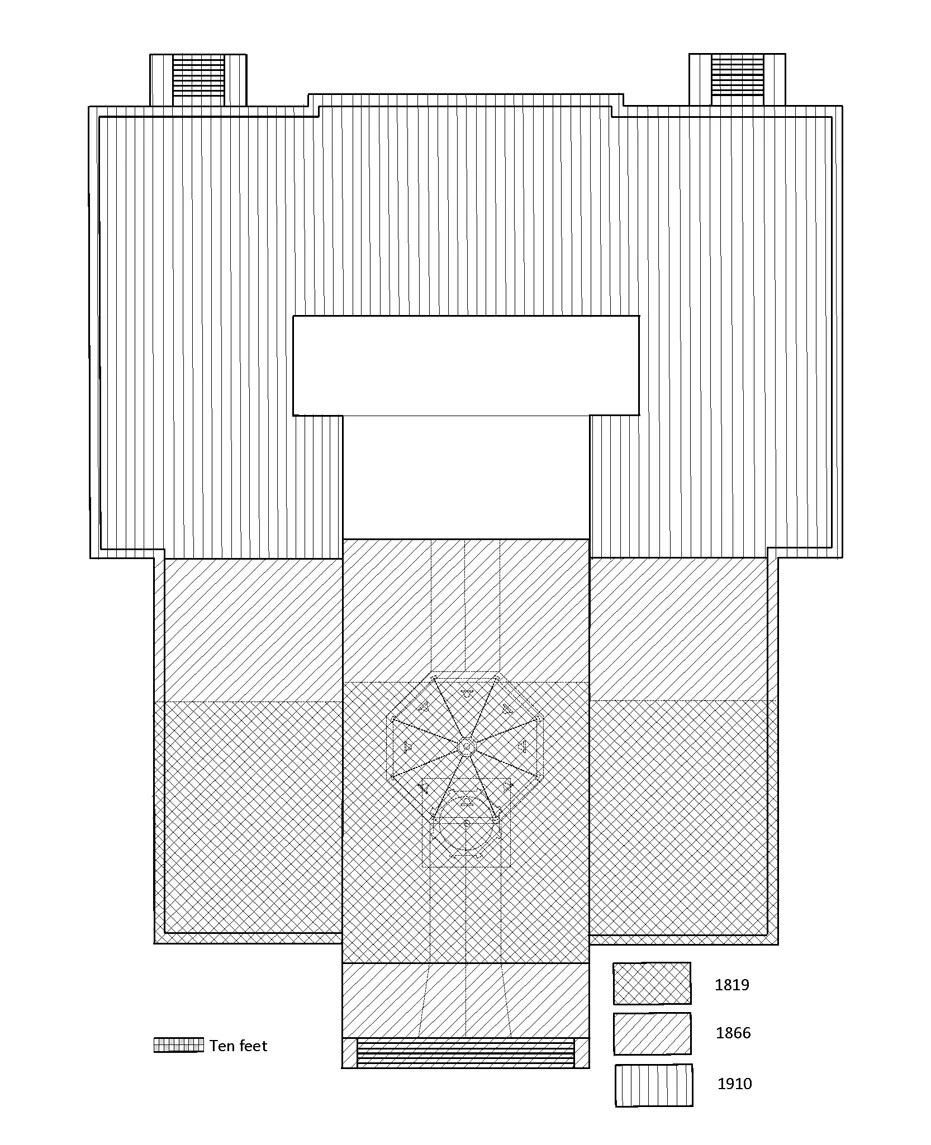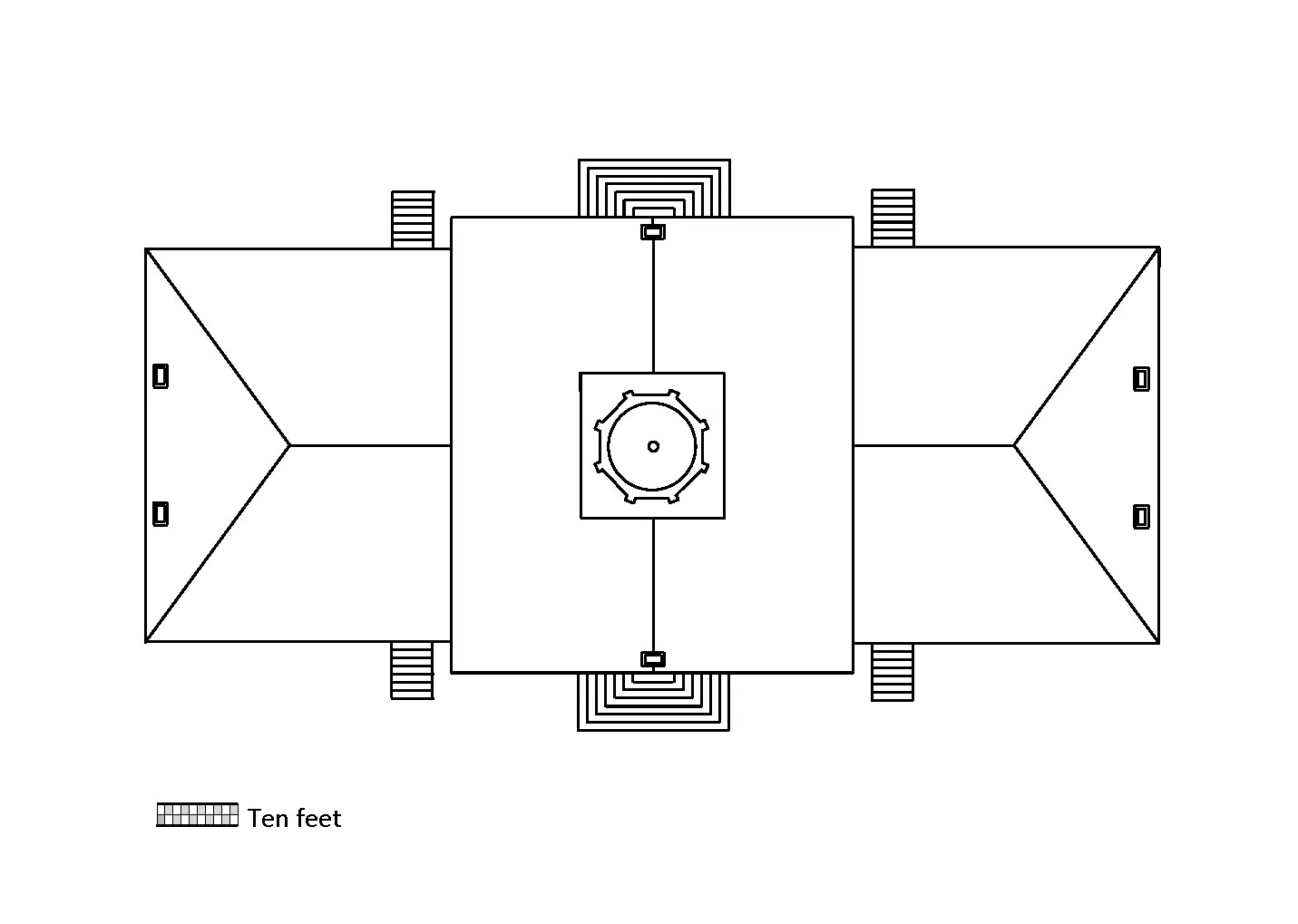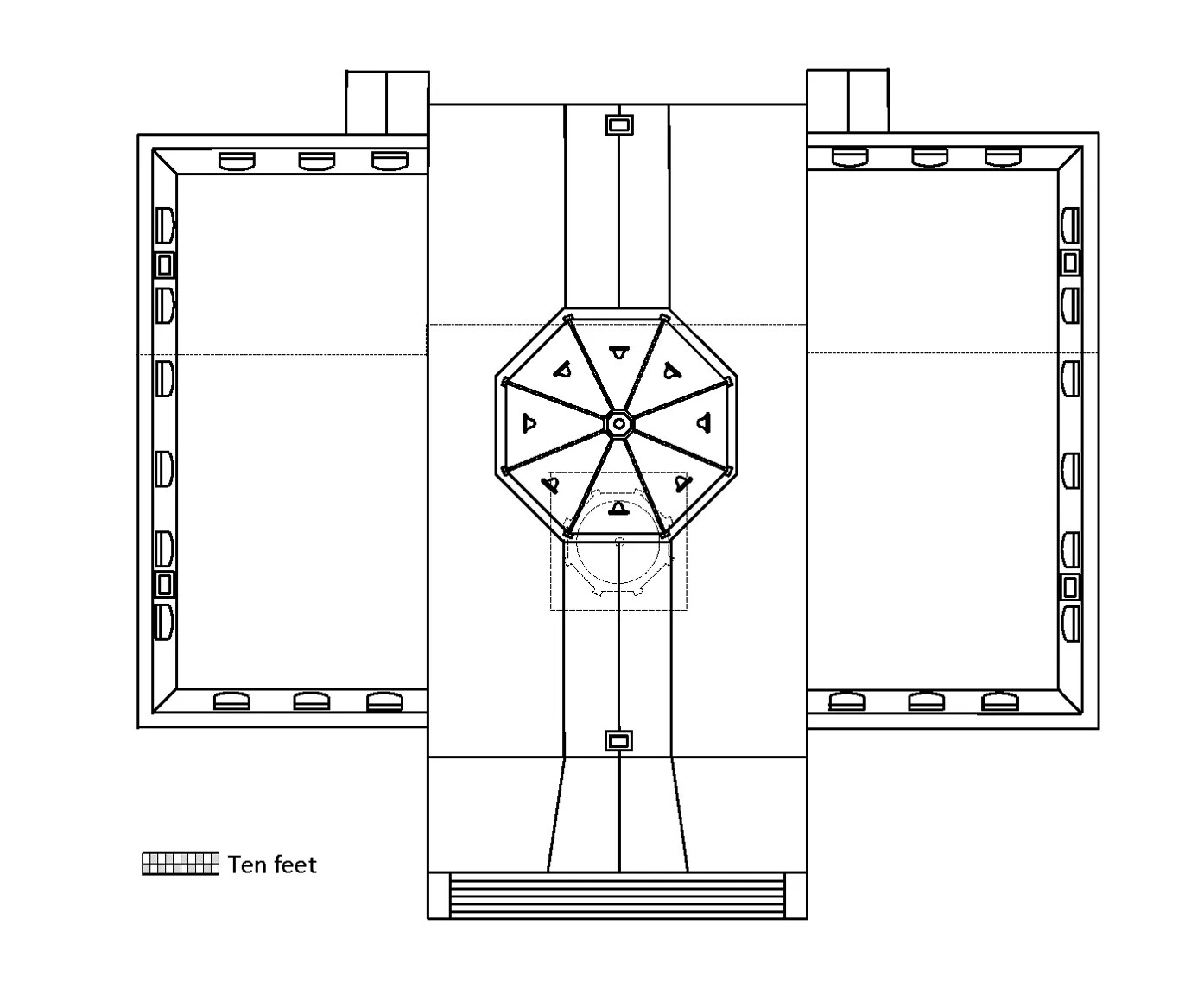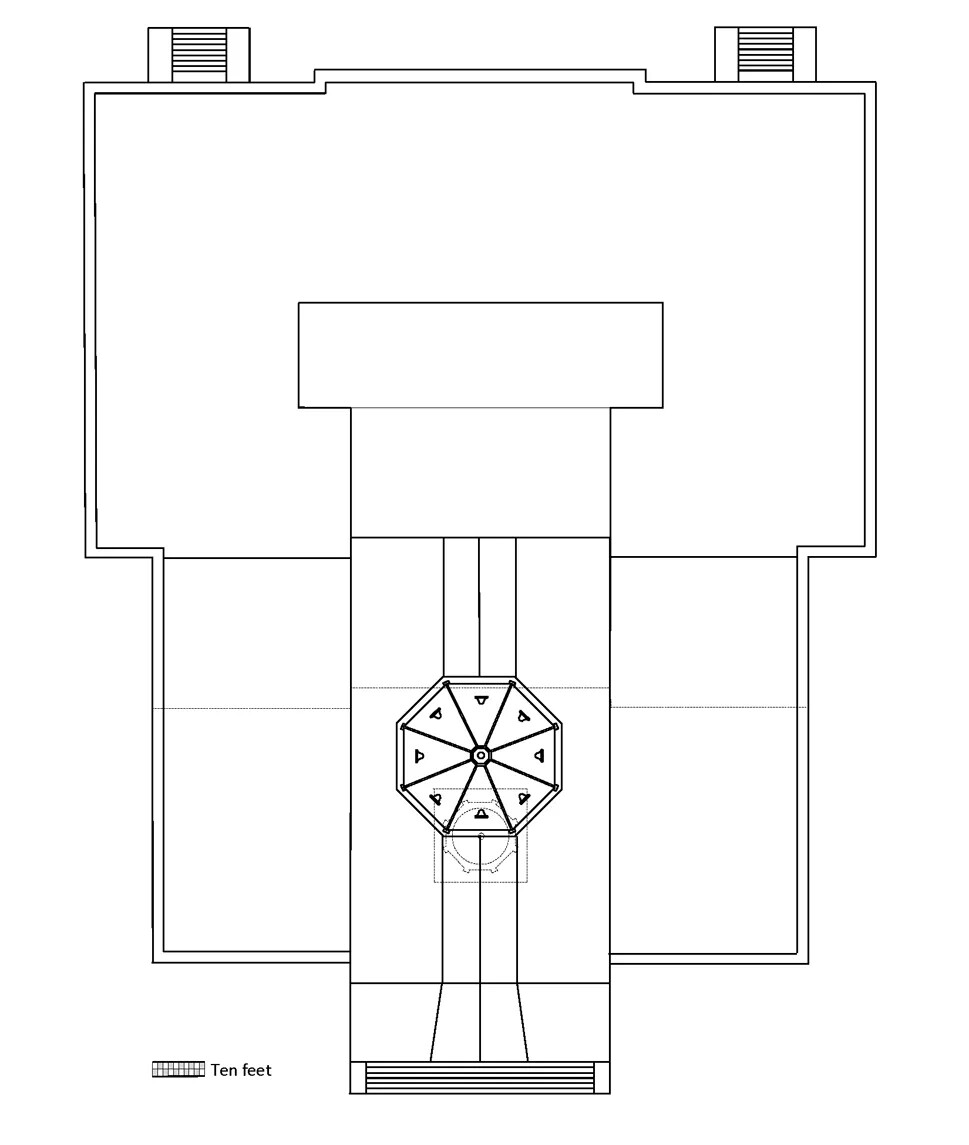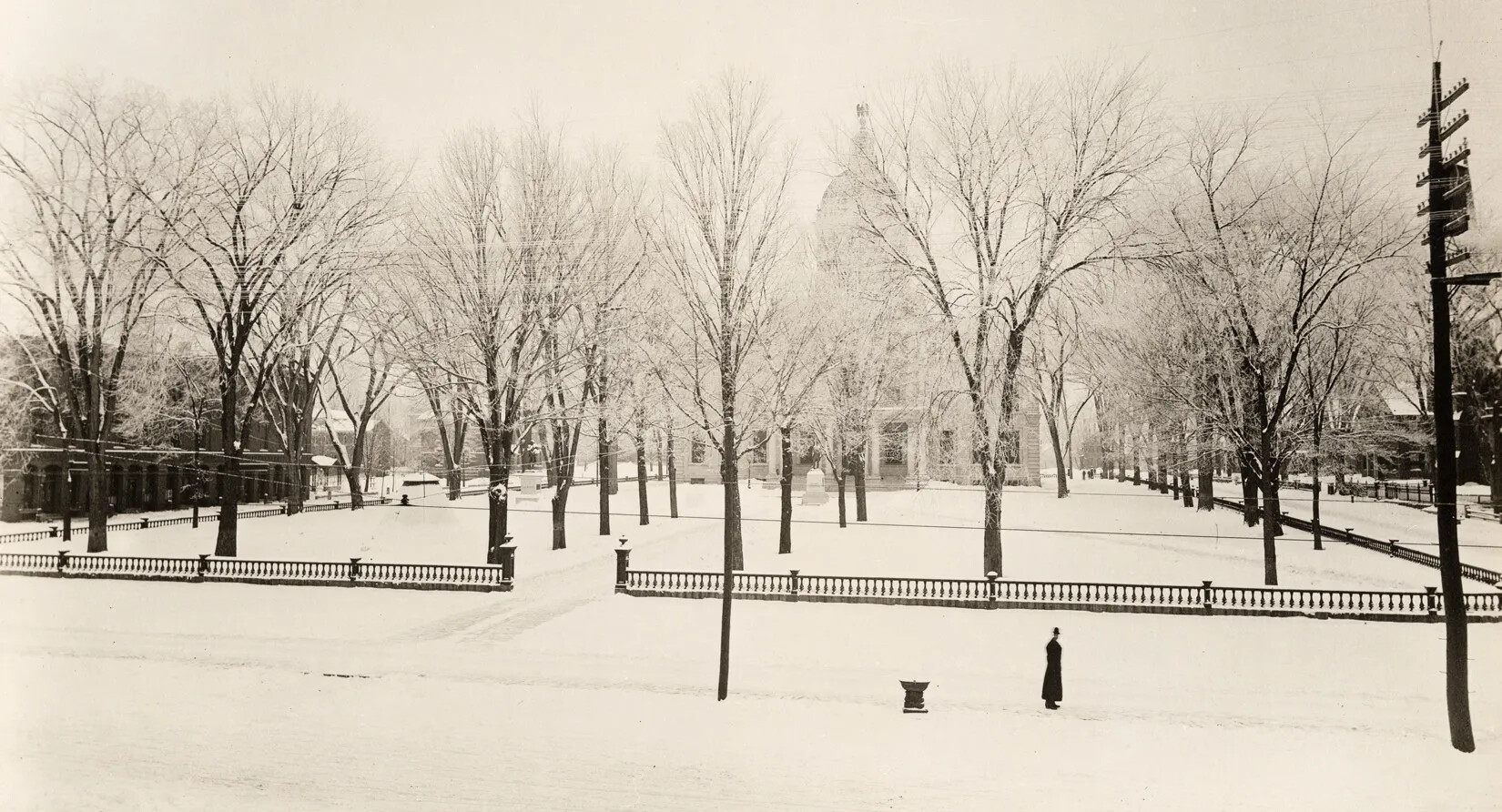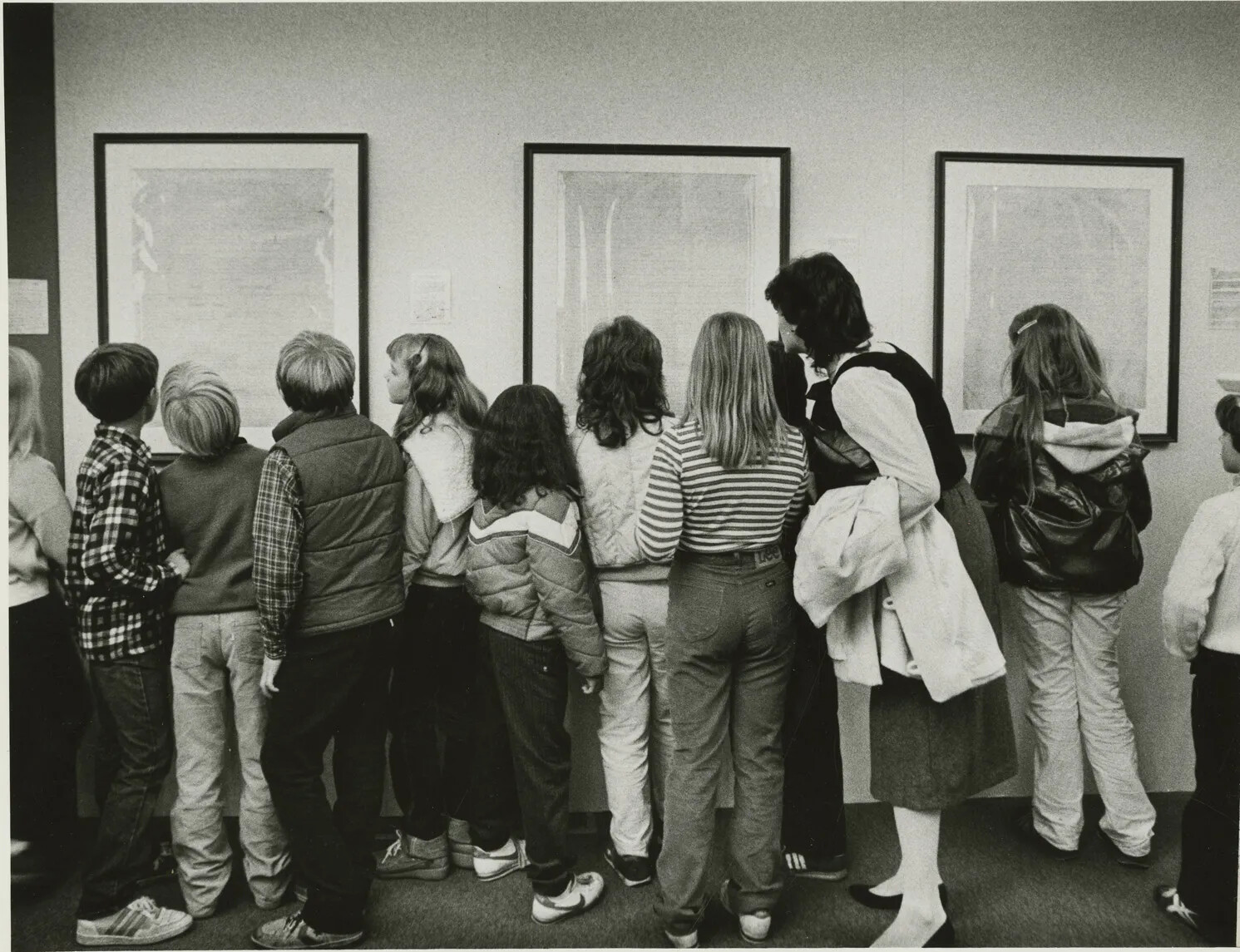Primary Source Set - The NH State House
The New Hampshire State House is the center of government for the Granite State. Built between 1816 and 1819, it recently celebrated its 200th anniversary. It is the oldest state house in continuous use in the United States.
Background
At the time the state house was built, Concord had only recently become the state capitol. Before that, the legislature met all over the state, in churches, town halls, and even taverns. Although sessions were occasionally held in places like Charlestown, Hanover, Hopkinton, and Amherst, most of the time the center of state government was in the Seacoast region, which frustrated people who lived elsewhere in New Hampshire. Establishing the state capitol in Concord, which is located at the geographical center of the state, was a compromise.
The state house was constructed out of granite quarried at nearby Rattlesnake Hill. The original design was fairly simple: it included a large public space at the center of the building (now known as Doric Hall after its eight Doric columns), a handful of offices for state officials including the governor, and the two chambers of the New Hampshire legislature: the House of Representatives and the Senate. The building was constructed in the Federalist style, which was typical of the time, and was topped by a cupola with a wooden eagle painted with gold leaf. Doric Hall became the scene of many ceremonies and official state occasions, while the area around the state house, known as the State House Yard, was used more informally for concerts, a marketplace, speakers, protests, and even baseball games!
Within just a few decades of its completion in 1819, the state house had already become too small for the state government, and in 1864–66, the building underwent a major renovation. The back of the state house was expanded, which created more office space and made both chambers of the legislature larger. The cupola on top of the building was replaced with a gold dome and the wooden eagle was reinstalled at its pinnacle. After the Civil War, the flags from New Hampshire’s regiments were placed in glass cases in Doric Hall, giving the space a new name: the Hall of Flags. In the years that followed, dozens of portraits were added to the state house walls of all the governors of New Hampshire except one (Meshech Weare, the first governor) along with other notable New Hampshire figures like General John Stark, President Franklin Pierce, and Senators John P. Hale and Daniel Webster.
In the late 19th century, the state also began to build statues on the state house lawn, commemorating figures from the state’s history: Webster, Stark, Hale, Pierce, and Admiral George Hamilton Perkins. Other memorials, mainly to New Hampshire soldiers or symbols representing national patriotism like a replica of the Liberty Bell, were added over the years.
Space remained an issue, though, especially as the state house once housed the state supreme court, the state library, and the state historical society. At one point there was even a small natural history museum located in the building. The state legislature also grew dramatically during these years, reaching 400 members. The N.H. House of Representatives remains the largest representative body in the country other than the U.S. House of Representatives, despite New Hampshire’s relatively low population. Conversely, the N.H. Senate is the smallest state senate in the nation.
The state house underwent another massive renovation in 1910, which saw the addition of the entire back portion of the building around a small courtyard. This expansion more than doubled the building’s size and included a large chamber for the executive council and new office space for the governor. Even then, the state government quickly outgrew the new space. The state supreme court, the state library, and the state historical society had moved out long before the 1910 addition, but it became clear to state leaders that they needed more space, leading to the creation of the Legislative Office Building across the street from the state house, the state annex across a different street, and eventually the state office complex on Concord Heights, just over a mile away.
Every four years, the New Hampshire State House gets national attention when the presidential candidates come to register for the New Hampshire primary. It is a longstanding tradition that the candidates come in person, meet N.H. Secretary of State Bill Gardner, sign the official forms on an antique desk in Gardner's office, and stop in the Visitors' Center to take pictures with the staff. With lots of campaign supporters and the national press in attendance, it becomes a media event for each candidate.
The state house is full of symbols of New Hampshire, with multiple depictions of the state seal; portraits, murals, and mementos of famous Granite Staters (including Alan Shepard’s moon rock); keepsakes from the state’s long history as the first-in-the-nation primary; and memorials to the state’s soldiers. The wooden state house eagle was replaced with a metal version in 1957, but the original stands today inside the New Hampshire Historical Society, welcoming visitors in the grand stairway.
Images of the state house appear on all sorts of commemorative items, from postcards to key chains to bottles. The state house was even painted on some of the panels of the world-famous Concord coach. Every year, thousands of school children visit the New Hampshire State House, where a tour of this state icon has become a rite of passage for many Granite State kids.
Additional Resources
- Elizabeth Dubrulle and Wesley G. Balla, The People's State House: A Special Issue of Historical New Hampshire 72.1 (Spring 2019).
- James Garvin and Donna-Belle Garvin, The Granite State House: A Special Issue of Historical New Hampshire 71.2 (Fall/Winter 2018).
- Meghan McCarthy McPhaul, "The New Hampshire Statehouse Turns 200," New Hampshire Magazine, June 2019, www.nhmagazine.com/the-new-hampshire-statehouse-turns-200/
- "New Hampshire Statehouse," C-SPAN, June 2017, www.c-span.org/video/?431829-1/hampshire-statehouse
- Timeline of New Hampshire History, New Hampshire Historical Society, nhhistory.org/Timeline.
Mason Explains: The New Hampshire State House
A New Hampshire state icon!
Focus Question
In addition to our general suggestions for using primary source sets, consider giving students the following prompt for an inquiry using this primary source set about the New Hampshire State House.
-
1How does the NH State House capture the character of New Hampshire?



